After our encounter with the pandas of Chengdu, we told you about Mount Hua, one of China’s sacred mountains. Today, we’re talking about Mount Emei, located in Sichuan Province. On the agenda: Buddhist atmosphere with around thirty temples, lush vegetation, countless waterfalls, and thousands of steps to climb! Ready for a little visit?
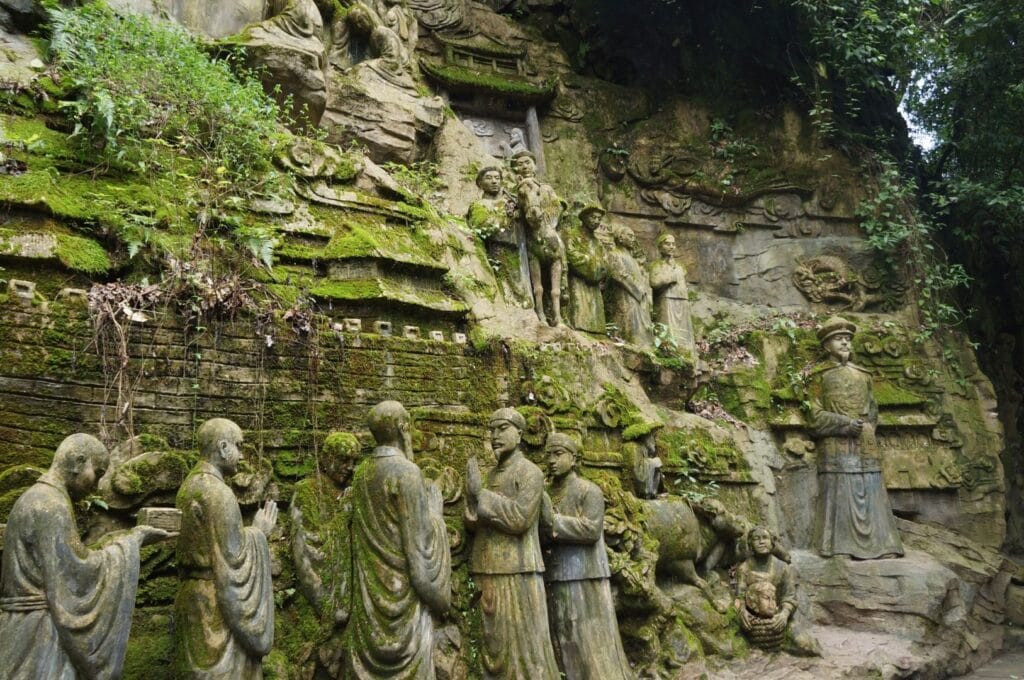
We visited Mount Emei in 2013, but this article has been completely reviewed and updated in July 2025. If you notice any price changes or have additional information that might be relevant, don’t hesitate to leave us a comment!
Presentation of Mount Emei
Mount Emei is an important pilgrimage site because it’s here that Buddhism was first introduced to China, and the first temples were built in the 1st century – can you believe it! It’s therefore one of the 4 sacred Buddhist mountains of China, not to be confused with the 5 sacred mountains (corresponding to the 5 Chinese cardinal points) which include Mount Hua ;).
This mountain, whose highest peak, Wanfoding, sits at an impressive 3,099 meters high, is also fascinating for its tropical flora, waterfalls, grand golden temple, and the animals that roam freely (particularly monkeys). Seeing the natural beauty of this place, you can better understand why it was chosen as the anchor point for Chinese Buddhism. Today, the mountain sits at the heart of Emeishan National Park and is inscribed on the UNESCO World Heritage List!
Throughout the 60,000 steps that will take you from Baoguo village to the summit, you’ll see several temples, some of which offer overnight accommodation. Let’s just say that if you tackle the ascent of Emei Shan (its Chinese name) from the very bottom, at 500 meters altitude, you’ll need to make 1 to 2 stops to sleep and arm yourself with quite a bit of courage ;). But it’s worth it! Don’t worry though – since it’s quite a touristy place, there are ways to shorten the climb a bit.
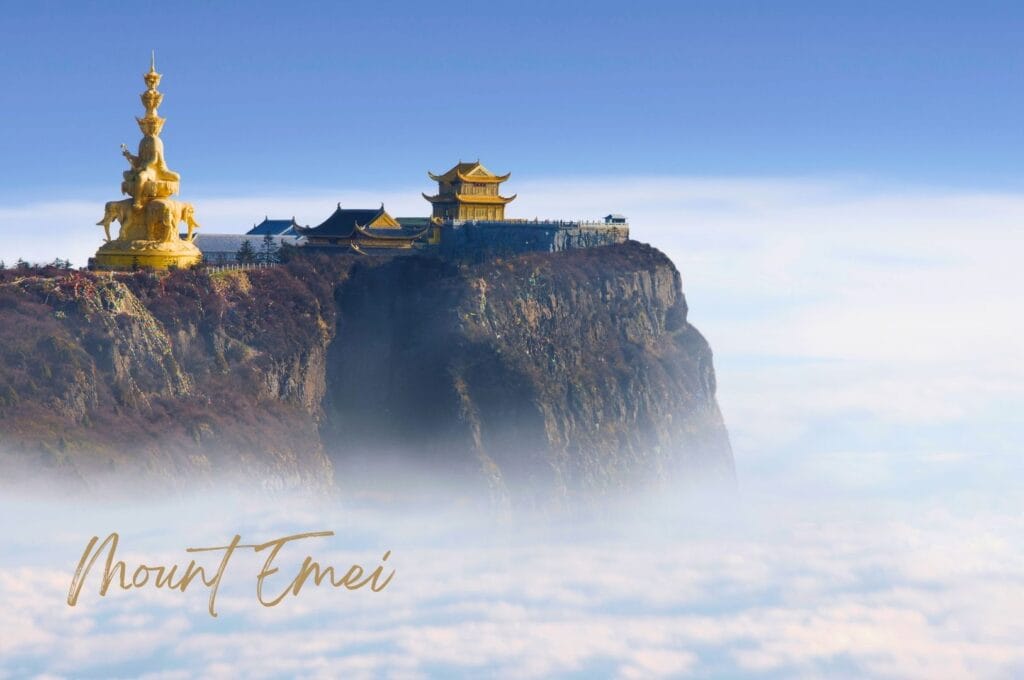
How to get to Mount Emei
To visit Mount Emei, you first need to get to Emeishan village, then to the small village of Baoguo, 6 km from Emeishan city center.
From Xi’an
From Xi’an to Emeishan, it takes about 5.5 hours by train for tickets that cost around 400 yuan per person. Check schedules and book your tickets online.
From Chengdu
After our visit to Chengdu, we took the train to Emeishan, but there are several options:
- High-speed train: In our opinion, this is the best option! There are more than 20 departures per day, the journey takes 1 hour. As for ticket prices, they’re around 110 yuan per person.
- Regular train: With 3 trains per day, it’s a bit slower. Allow 2 hours by train for a ticket that costs 76 yuan.
- Bus: It takes about 3 hours and costs 51 euros. At the time of our trip, this was the only option. Things have really changed since then ;).
From Emeishan to the hike starting point
Once at the station, buses reach Baoguo village in 40 minutes. Find lines 5A or 12. Otherwise, take a taxi. On foot, you’ll need more than an hour…
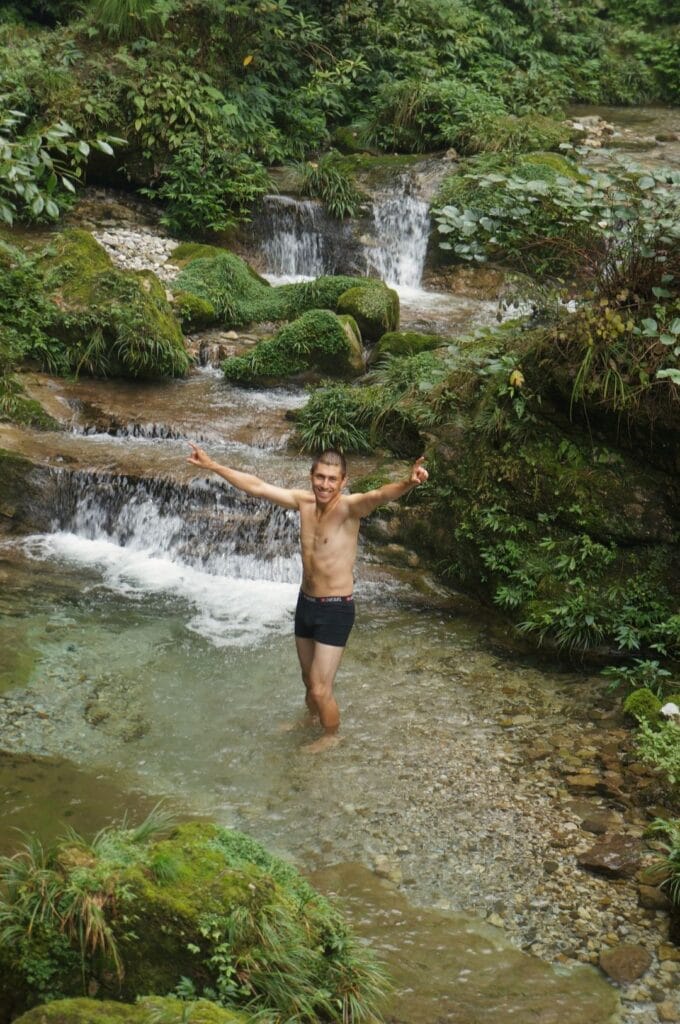
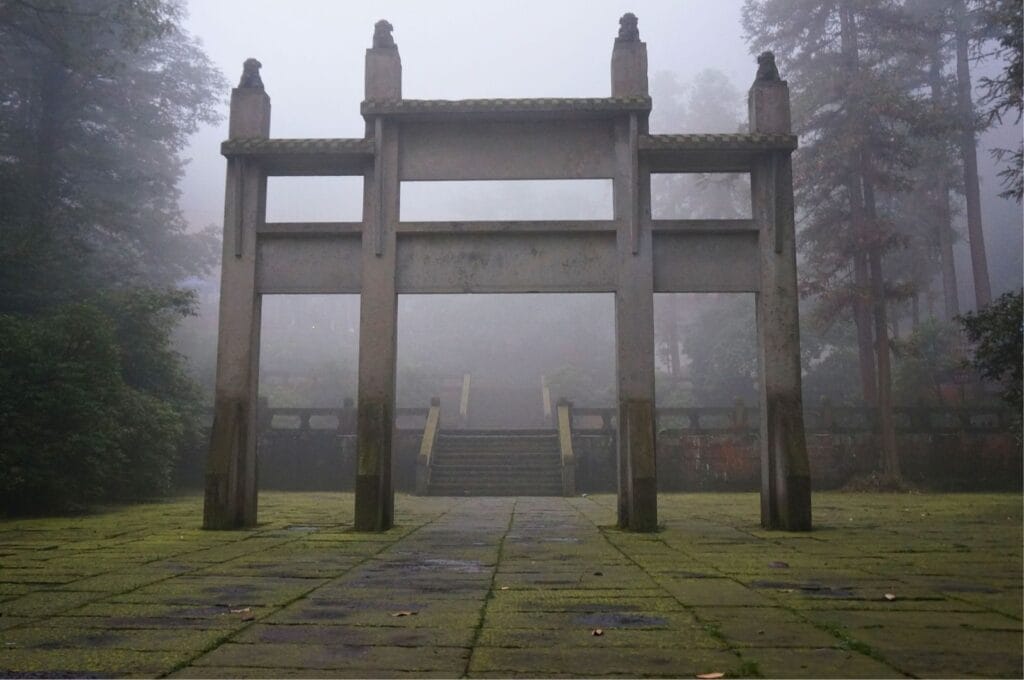
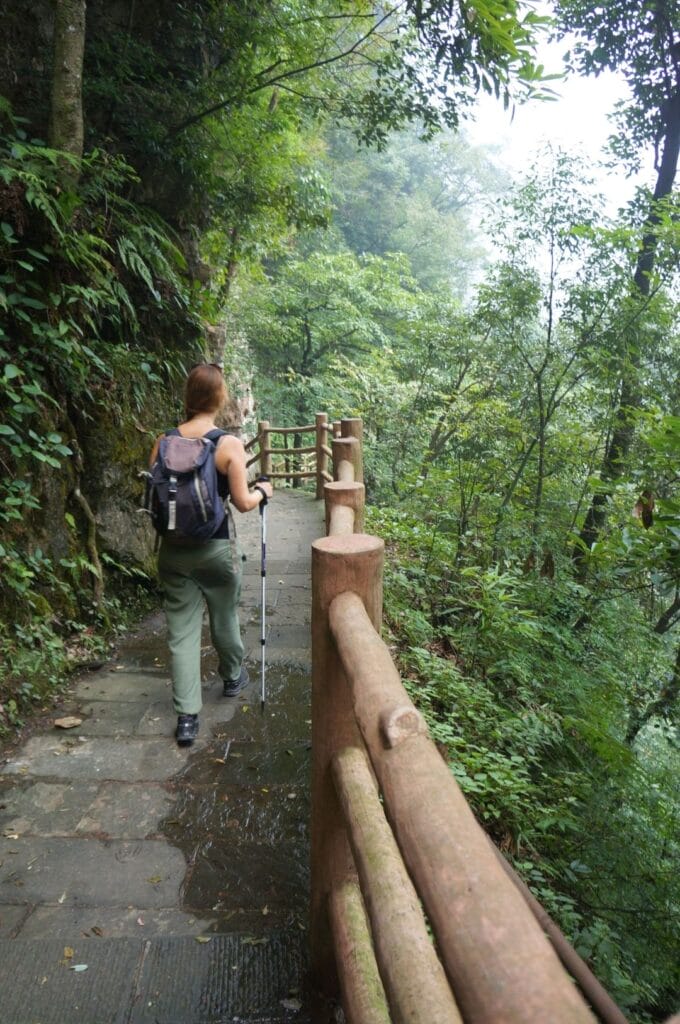
This article contains affiliate links to partner sites. When you use our links to book accommodation, a car, or an activity, you don’t pay anything extra, but we get a small commission. This helps us to offer you free, independent, and ad-free content. Thank you for your support!
Where to sleep in Emeishan
The best place to start the adventure is Baoguo village, next to Emeishan. Located right at the foot of the mountain, it’s also where all the buses to the summit depart from. We stayed at the Teddy Bear Hotel, an absolutely amazing hotel right next to the hike starting point! The English-speaking staff is very friendly and gives lots of useful info, the local food is cheap, the rooms are clean and spacious for a very small price, the internet speed is great, etc. We even stayed 2 extra days in this hotel to work a bit on the blog! Bonus: we were able to leave our big world-tour backpacks for free and only take the small ones during these 3 days. In short, we can only recommend it!
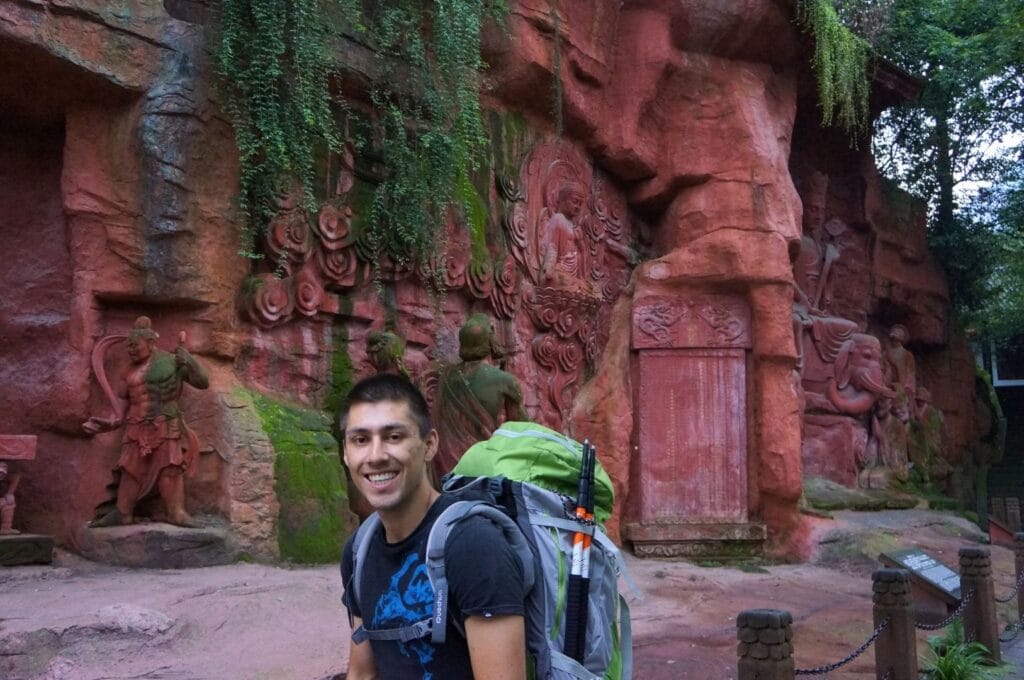
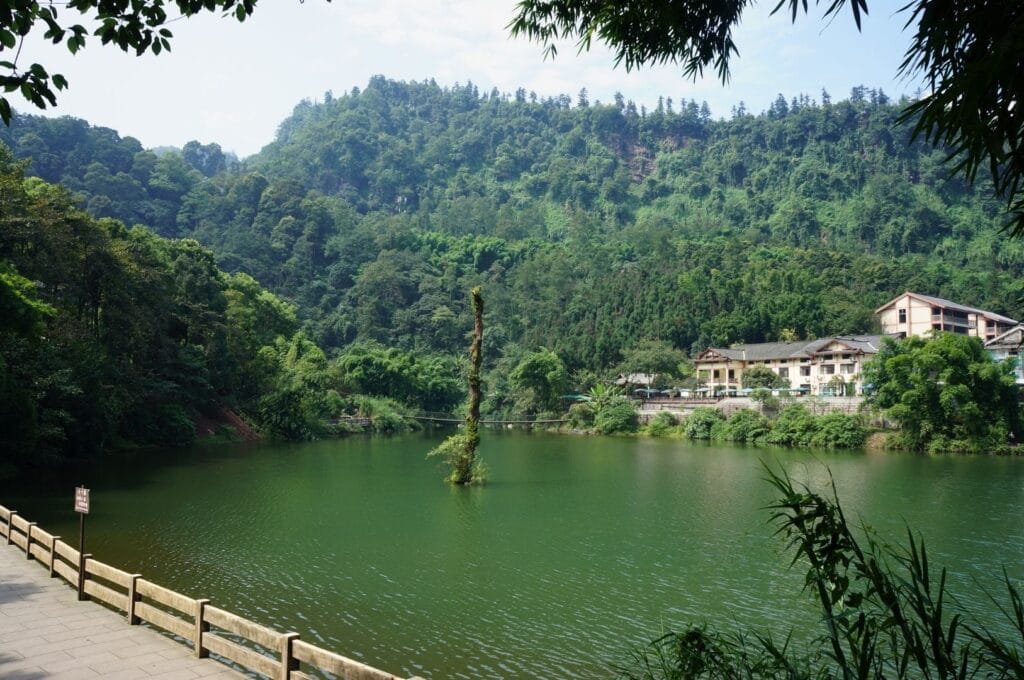
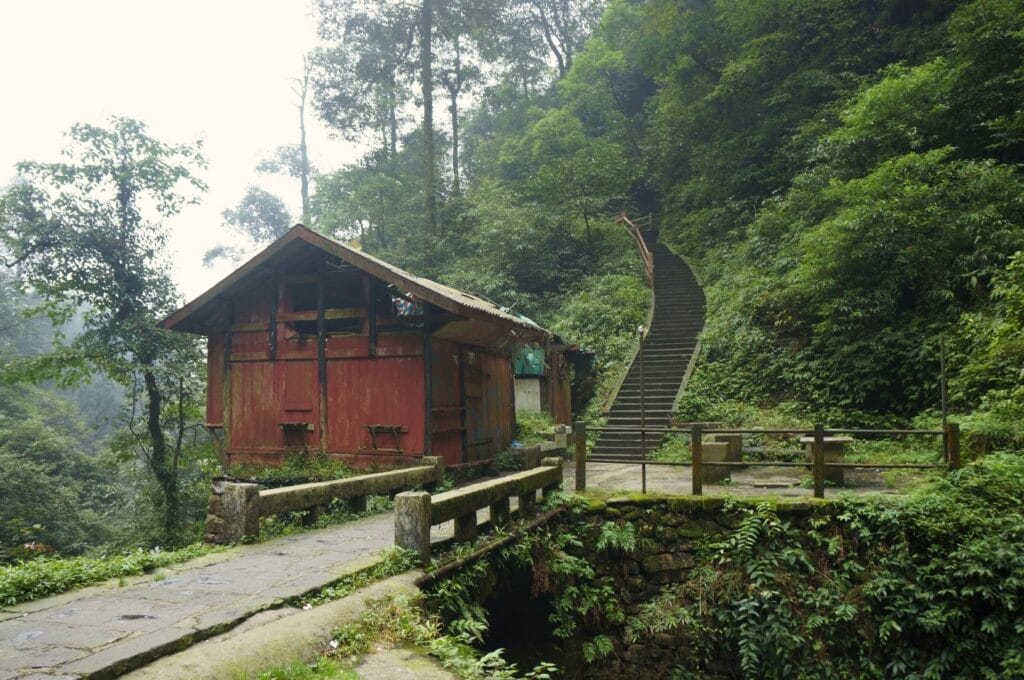
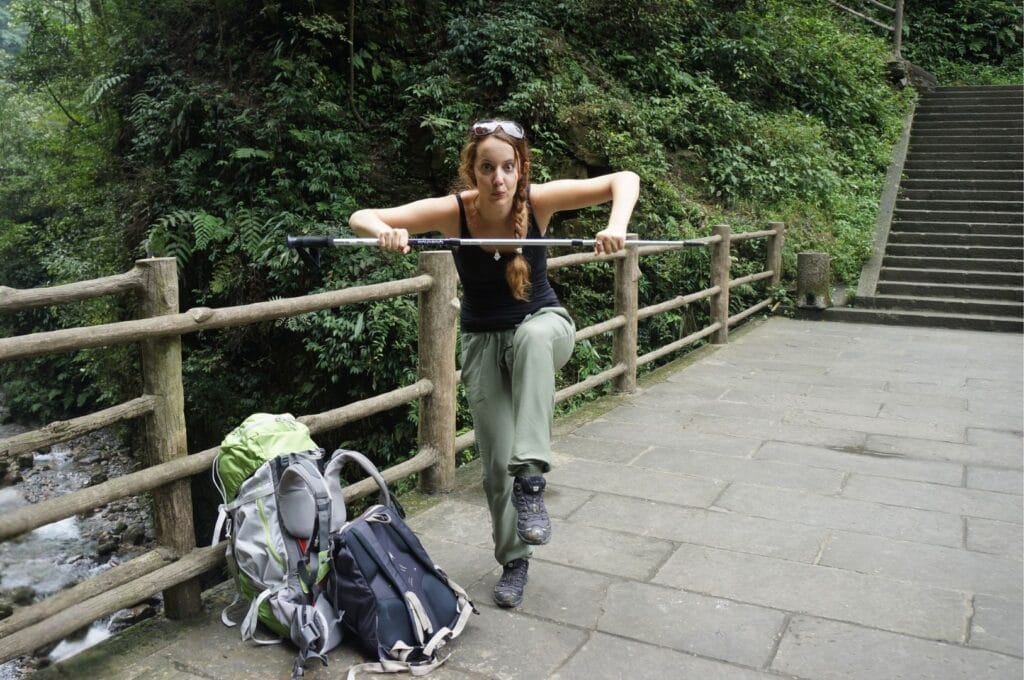
Practical information for your visit
Best time to visit Mount Emei
Like the rest of China, we don’t recommend coming during July and August, as well as the first weeks of October (Golden Week for the Chinese). You’ll avoid the biggest crowds. Otherwise, spring and autumn are ideal for enjoying relatively mild temperatures and fewer tourists. In short, if you’re in China between March and May and between September and November, then it’s perfect! In winter, Mount Emei can also be visited and the snow makes the panoramas even more incredible. However, sections of the mountain might be closed due to weather conditions. Last point: prefer going on weekdays rather than weekends.
National Park fee
Entry to Emeishan National Park costs the modest sum of 160 yuan per person in high season (January 16 to December 14) and 110 yuan in low season (December 15 to January 15). Fortunately, the ticket remains valid for 4 days!
Climbing to the Golden Peak
The accessible summit of Mount Emei is Jinding, or the Golden Peak, and it rises to 3,079 meters. Its special features? The breathtaking view, of course, but also the immense golden statue representing Puxian with 10 faces, a Buddha before enlightenment (also called bodhisattva), above elephants. So, for the most courageous, the many steps are just waiting for you! Ready for 2,500 meters of elevation gain to reach the summit? 😉 Otherwise, you can reach the summit by bus and cable car.
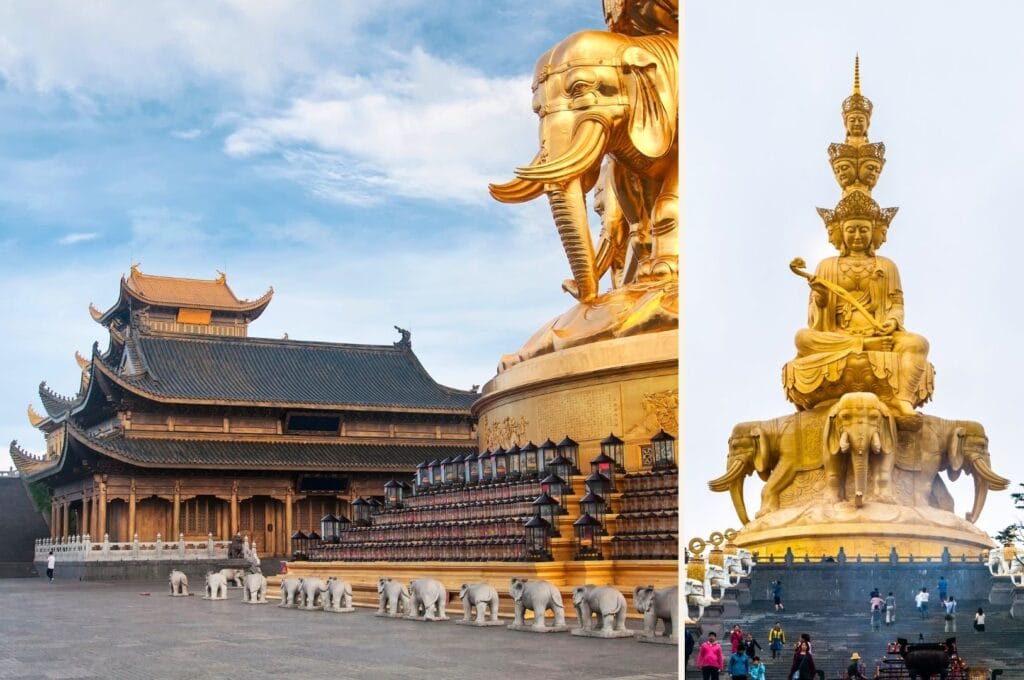
On foot
This is the way we chose and we explain everything just below!
By bus and cable car
As often in China, points of interest and mountain summits are accessible by cable car and I have to say, unfortunately… Let’s just say that around bus stops and cable cars, it can be packed with fairly well-off Chinese tourists. It’s a bit of a shame for the mountain summit…
If you can’t climb on foot, visiting Mount Emei turns out to be quite expensive. For entry, buses and the cable car, you need to shell out a total of 370 yuan (45 euros). And you must add the cost of accommodation…
To keep it simple, you must take a direct bus from:
- Baoguo temple (50 km, 1 h 30, 90 yuan round trip);
- Wuxiangang parking lot (40 km, 1 h 20, 70 yuan round trip) ;
- Wannian parking lot (35 km, 1 h 10, 70 yuan round trip);
- Kilometer zero, west of the national park (20 km, 40 min, 50 yuan round trip).
To help you navigate, all these points appear on the Mount Emei map. These buses will drop you off at 2,500 meters altitude, at Leidongping, a 10-minute walk from the cable car that goes to the summit. Get ready to pull out your wallet again! Expect to pay 65 yuan to go up and 55 to come down using these cabins…
In this case, count on a total of 8 hours visiting Mount Emei (transport included) from Emeishan.
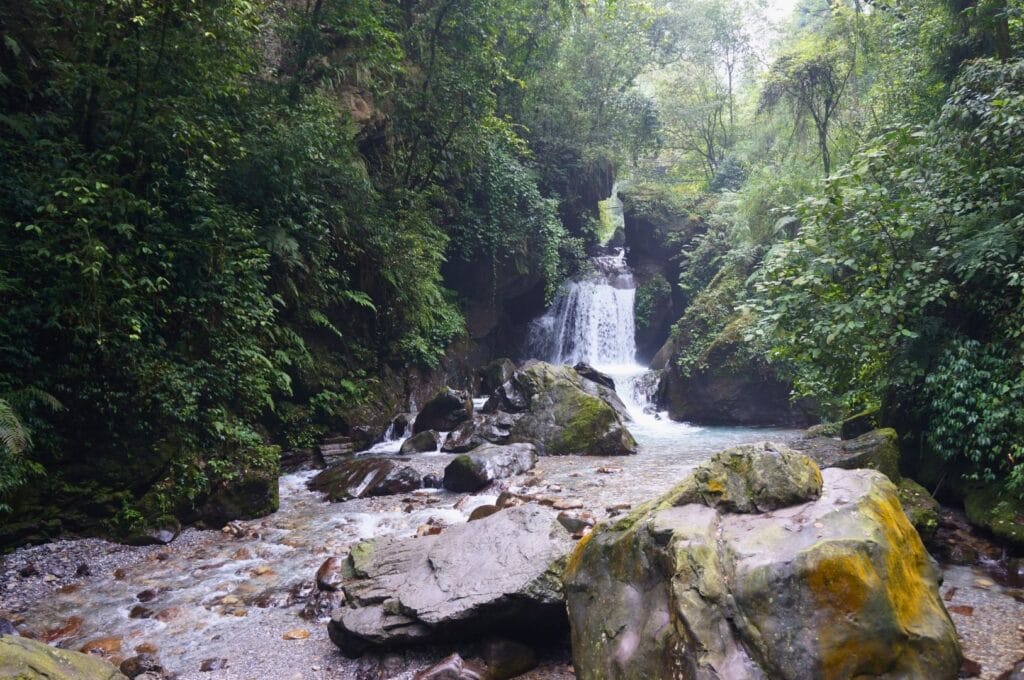
Bus schedules are as follows: 6 a.m. to 6 p.m. (high season, January 16 to December 14), 7 a.m. to 6 p.m. (low season).
For the cable cars, it seems they open from 6 a.m. to 6 p.m., but there’s no way to find confirmation online that they’re actually operational that early… Anyway, unless you sleep on the mountain or hike at night, it’s impossible to see the sunrise by taking the bus and cable car. The first buses leave too late ;).
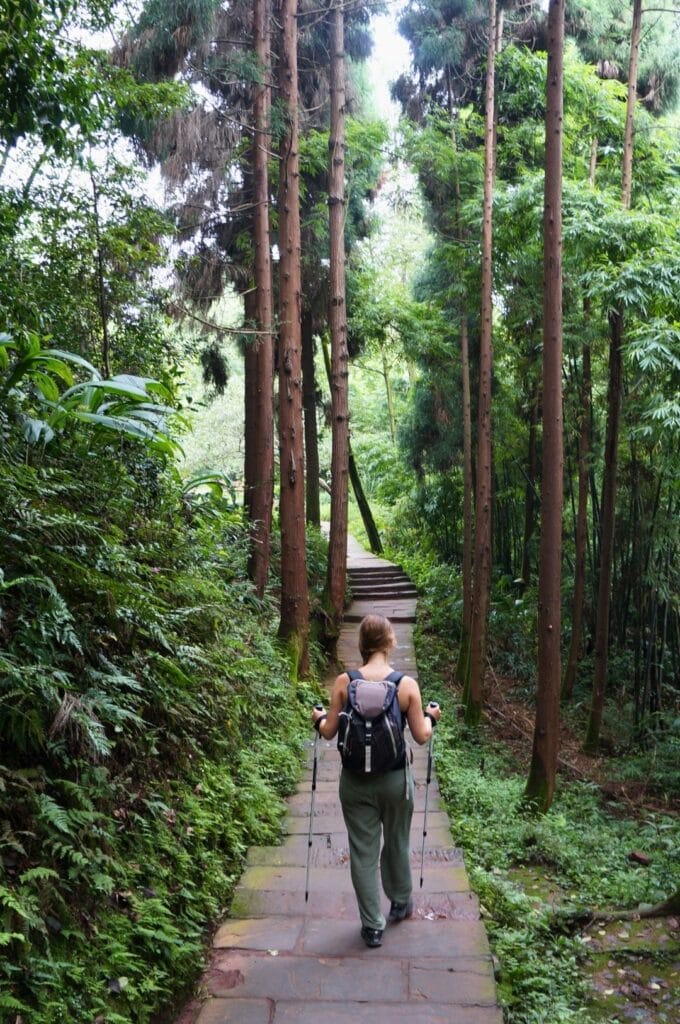
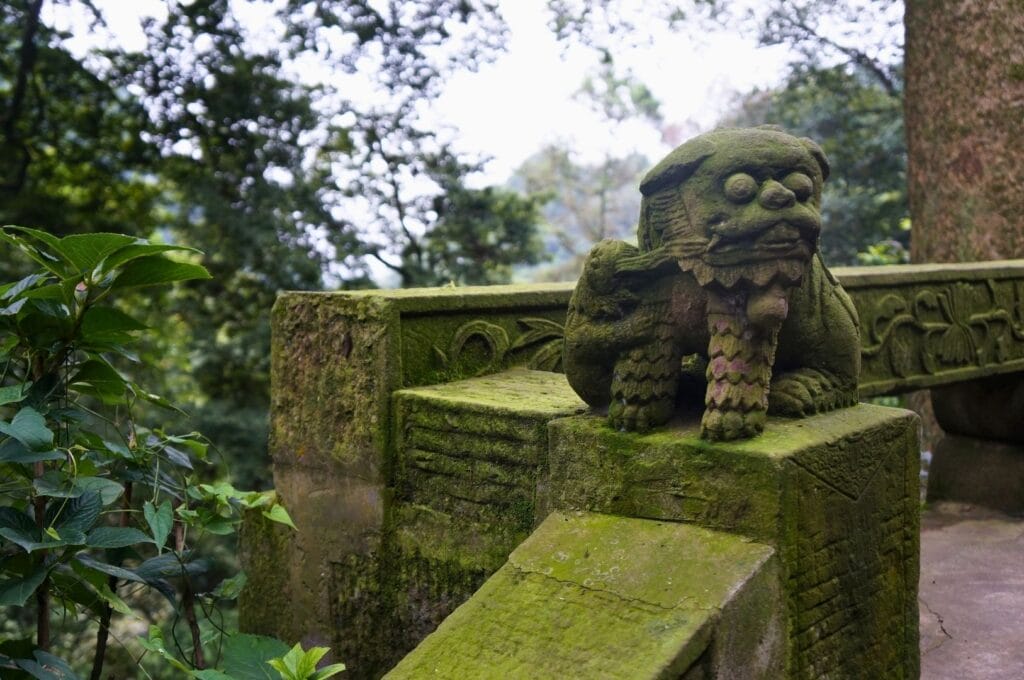
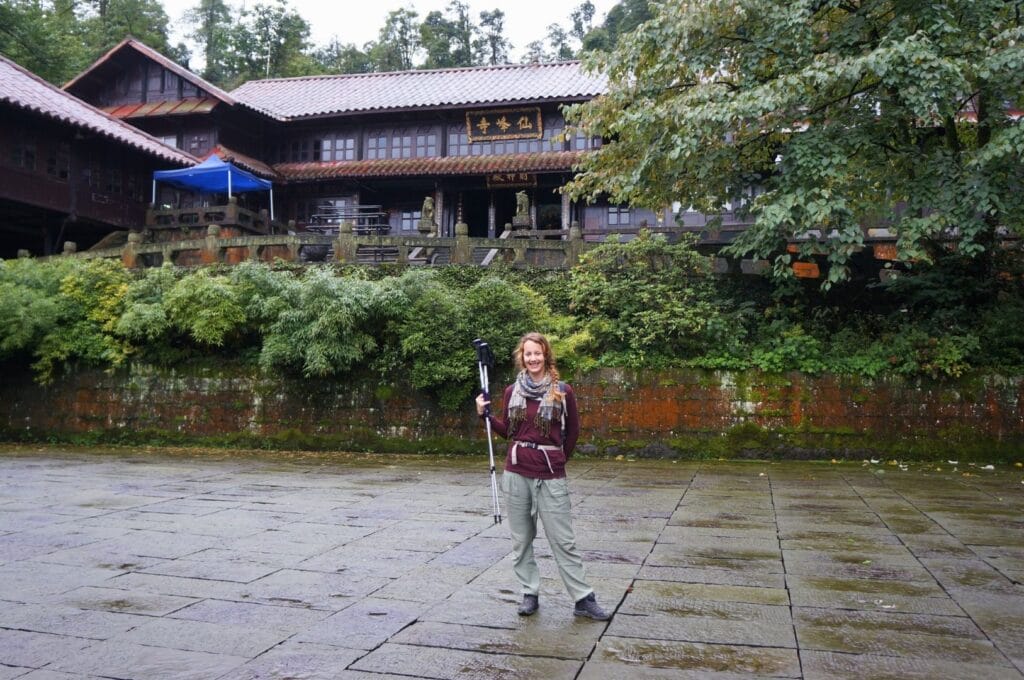
On foot, cable car and bus
Otherwise, you can do a mix of 2 or 3!
- Another option to discover Mount Emei is to go up by bus + cable car to the summit, sleep at the summit for sunrise, then walk down.
- Or if you want to work your cardio, take the bus (40 yuan) and cable car to Wannian temple (65 yuan) if you want to do the less scenic right side (10 km and 1,900 m positive elevation gain via the right hiking trail). To take the left path, you must take the bus (40 yuan) to Wuxiangang, where you’ll start the hike (13 km and 2,600 m positive elevation gain), thus avoiding the first section of the hike. In both cases, you’ll arrive at Leidongpin,g where you’ll take the cable car to the Golden Summit (Jinding). To go down, return to Leidongping on foot to take the bus to Baoguo Temple.
- Finally, last option, you take the bus to Leidongping, then, rather than taking the cable car to Jinding, you walk up the last 3 km and 600 m positive elevation gain that separate you from the Golden Peak. It takes about 2.5 hours. For the return, walk down to Leidongping and take the scenic trail. You’ll take a small day to descend while stopping at different temples and points of interest.
Gear
We recommend taking enough water and snacks with you. There are a few small vendors on the trails, but they obviously take advantage of being far from any store to inflate prices, particularly on water. Scams are unfortunately common. At the time, we had 3 liters with us, plus Micropur tablets to refill bottles at springs/waterfalls along the way.
Note: since our trip, we’ve changed how we handle water. Since 2016, we’ve switched to the Lifestraw bottle. Having a filtering water bottle is clearly the most ecological and economical option in the long term. Wherever we are, we now drink water thanks to this bottle (except if tap water is drinkable obviously ;)).
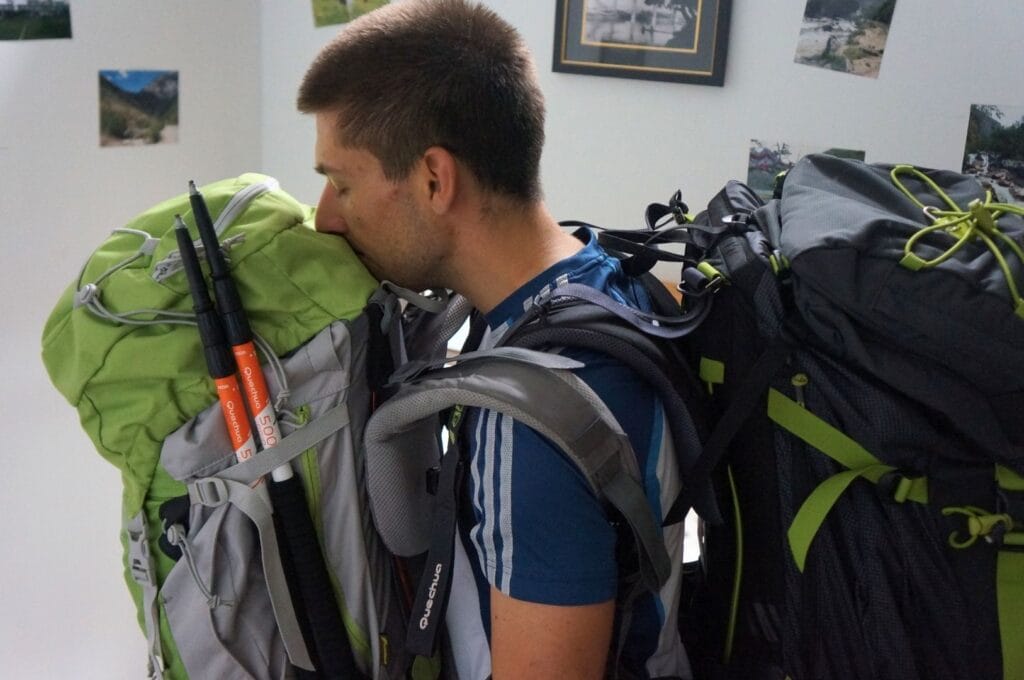
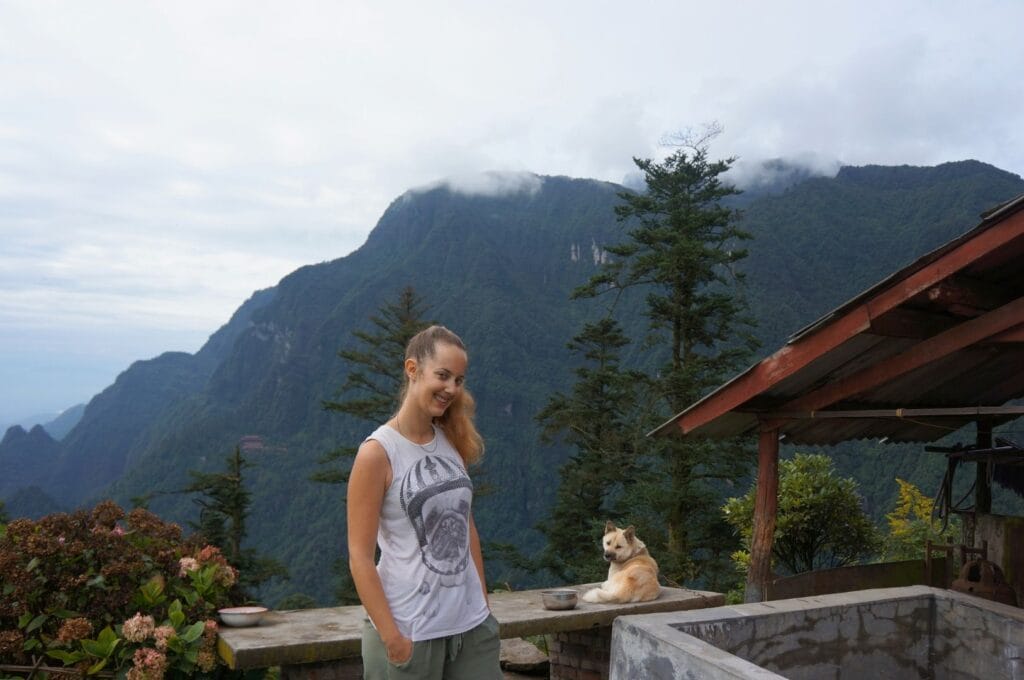
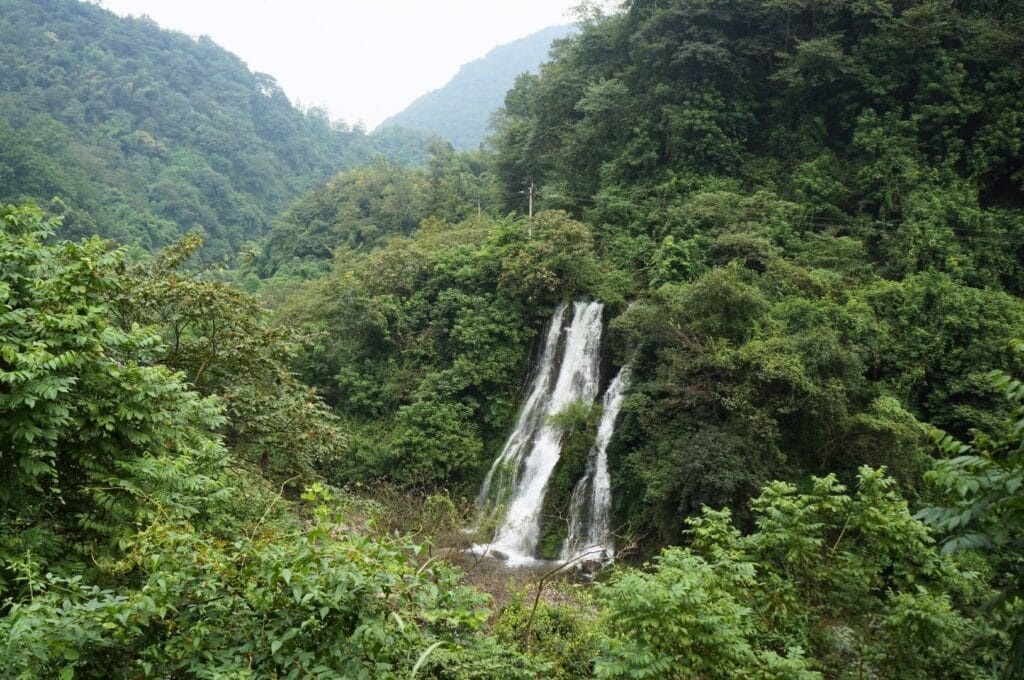
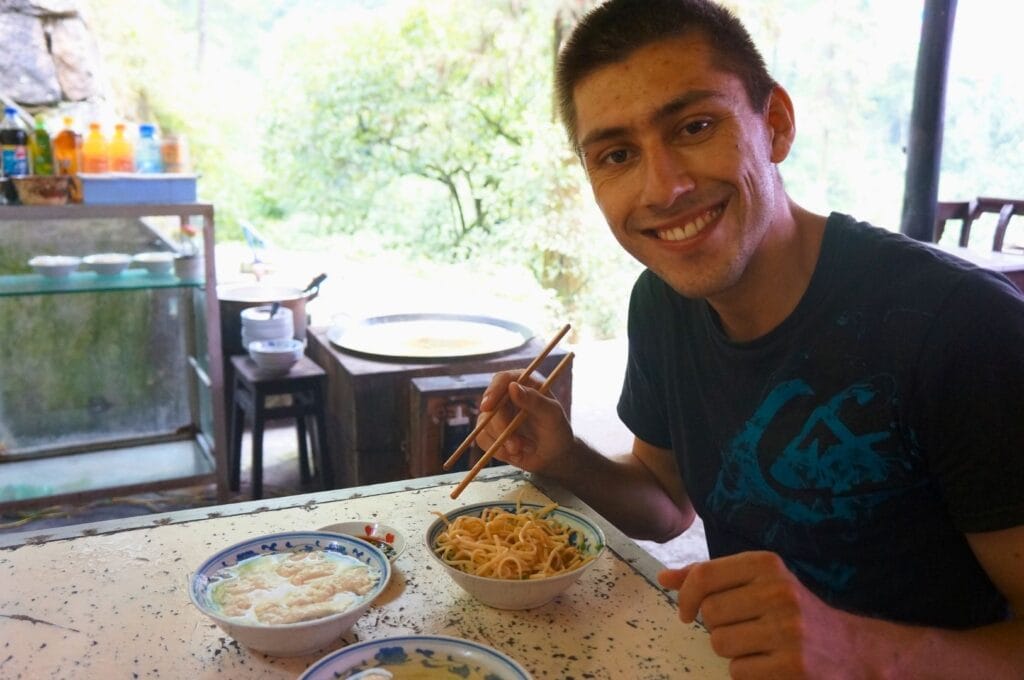
You’ll also find some small restaurants. We didn’t test it, but the one at Xixiangchi gets unanimous approval!
Clothing-wise, it can be hot and humid as well as cold with such an altitude difference! Plan several layers accordingly.
Tip: Carry your things in your small backpacks! Leave your big bags at your hostel next to Baoguo temple like we did.
Ascending Mount Emei
Summary
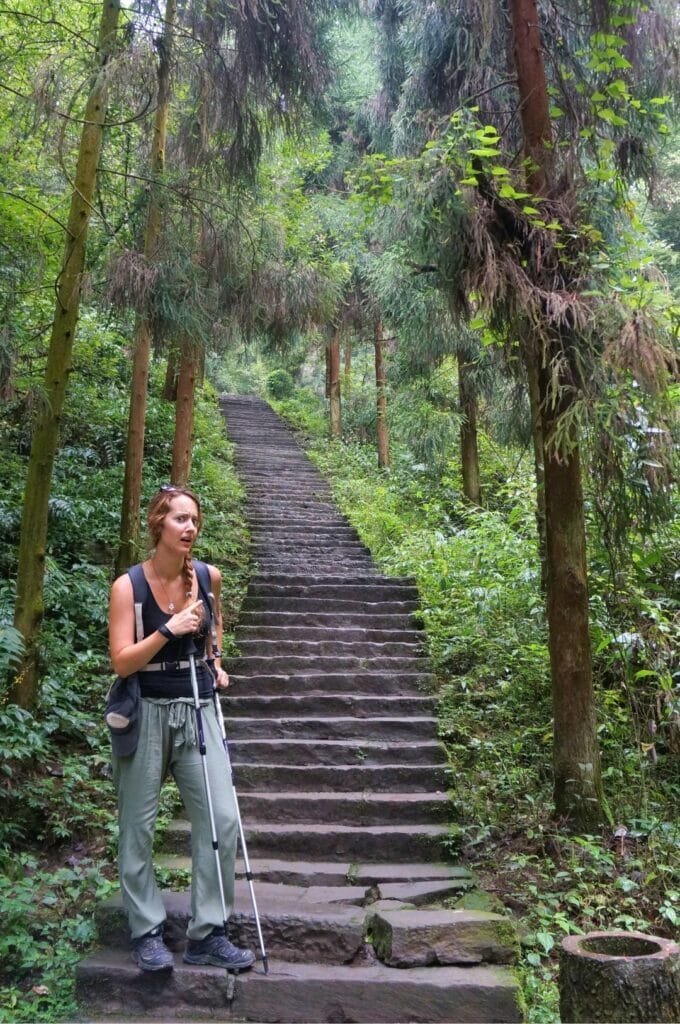
- 48 km
- 2 or 3 days
- 5,315 m positive elevation gain (same in negative)
In total, we took 2 days to go up and down!
Depending on your arrival time and especially if your heart is set on it, you can witness the sunrise from the Golden Peak. By cable car, it’s complicated since the first ones operate from 6 a.m. However, you can very well spend a night on the mountain, then leave in the middle of the night to arrive in time to see the sun rise over the sea of clouds. You might have the chance to witness the Brocken spectre and a glory from the great statue at the summit!
Hiking map
As mentioned above, it’s much nicer if you can stay on the left side of the mountain (the lower route on the map). This area is very well preserved and far from the crowds!
Our experience
We went up the left slope of the mountain and came down on the right side. If we had to do it again, we would also come down via the left slope because that’s where most of the watercourses are. Moreover, the landscapes there are truly splendid!
However, as you might imagine, far from bus stops, a large part of the mountain is only accessible on foot. That’s actually where the real interest of Mount Emei lies. We can’t recommend enough staying on the left flank of the mountain and climbing these many steps to fully enjoy this lush nature, the watercourses that spring up everywhere, and the free-roaming monkeys.
But since images speak louder than words, here’s a little video of our hike on Mount Emei (our first real video, be indulgent!).
After spending two days alone on the mountain, we decided not to climb to the summit for 2 reasons. One, we had already done 1,500 m of positive elevation gain, so fatigue was setting in. And two, the famous bus and cable car bring a significant number of tourists almost to the mountain summit. So we were afraid of being disappointed after two magnificent days spent in the lush forest, far from the crowd. However, we were told that despite the crowds, the summit temple is worth seeing… So what we recommend if you want to climb to the summit is to take your time climbing via the left flank (in 3 days) and then invest 50 yuan to come down by bus because doing the round trip on foot isn’t for everyone ;).

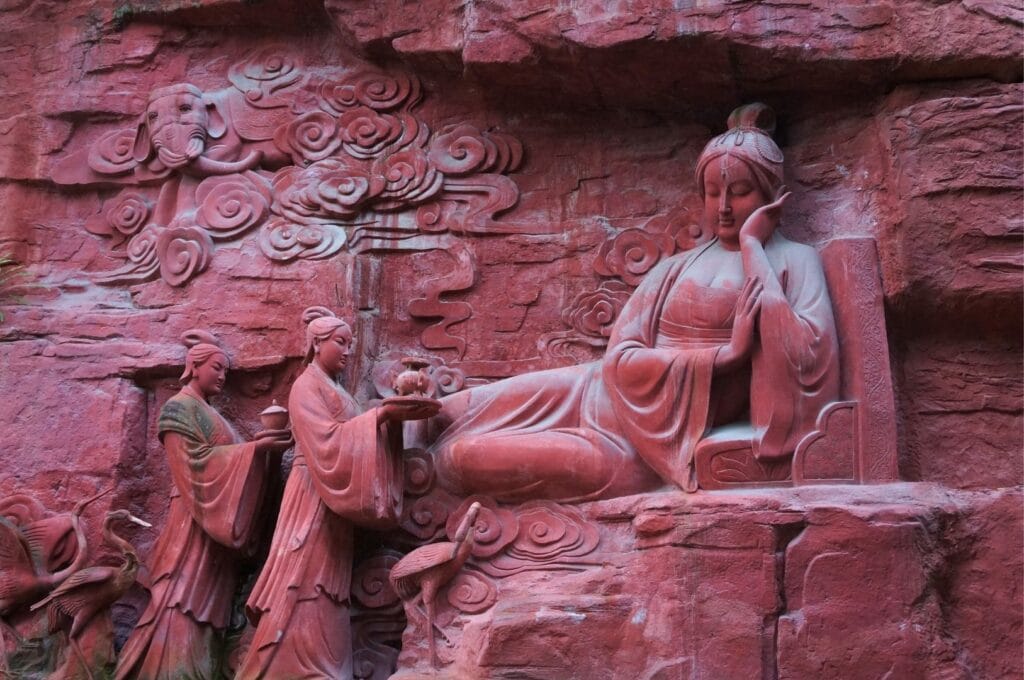
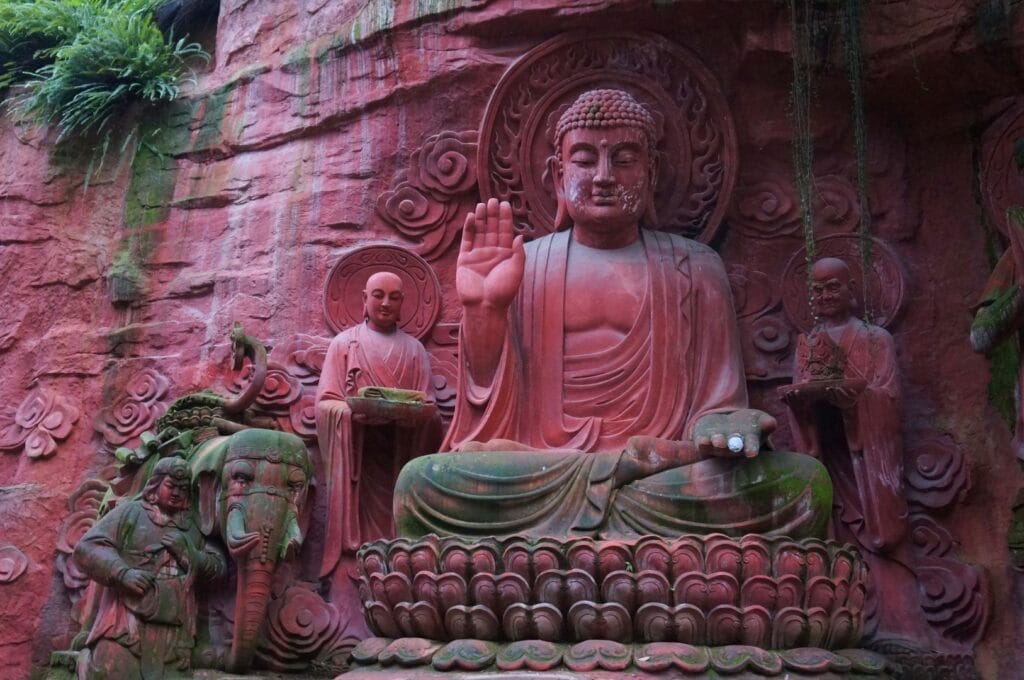
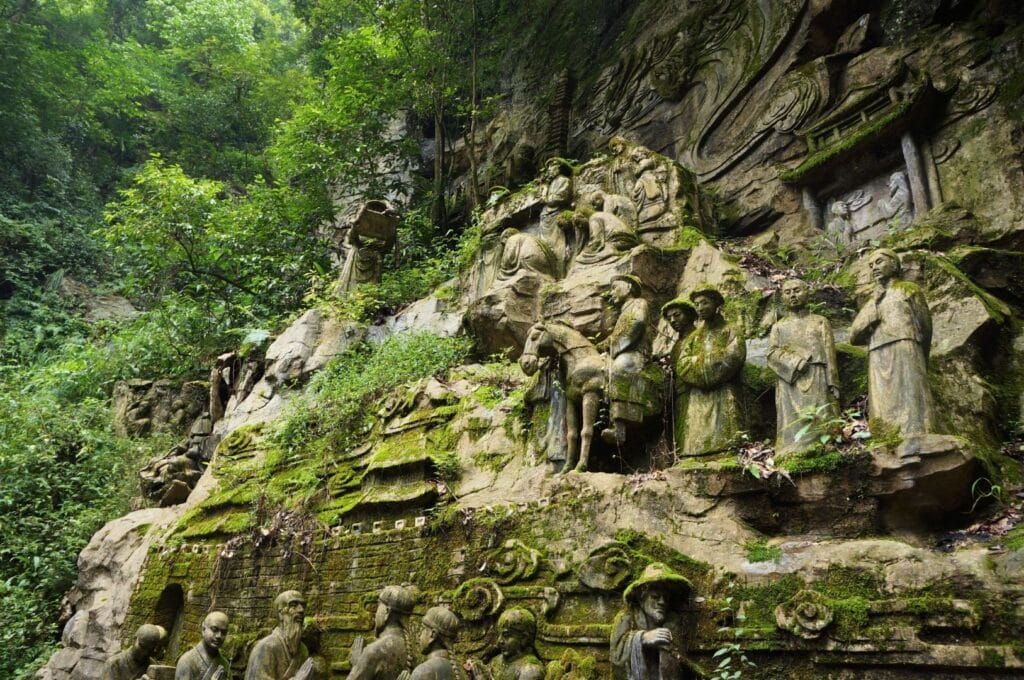
Sleeping in a temple
If you choose the option of climbing on foot via the left side, you can also sleep in one of the Buddhist temples or monasteries found along the way. And that’s quite an experience!
Among the temples we encountered, we slept at Xianfeng temple (50 yuan per person), which was basic but left us with good memories. We also stopped at Chu monastery, which enjoys a magnificent view of the mountain and is even cheaper than the one we slept in (40 yuan per person). We could have easily seen ourselves staying there for the night ;). Near Leidongping, Xixiangchi Temple is a good option for those who can’t reach Leidongping. Finally, to get closer to the summit, it’s possible to sleep at Taiziping, the last temple before the Golden Summit, located 45 45-minute walk from the highest point. Well, for this last one, there are still 22 km to cover with 3,700 m positive elevation gain before getting there, but no doubt it’s ideal for enjoying the sunrise.
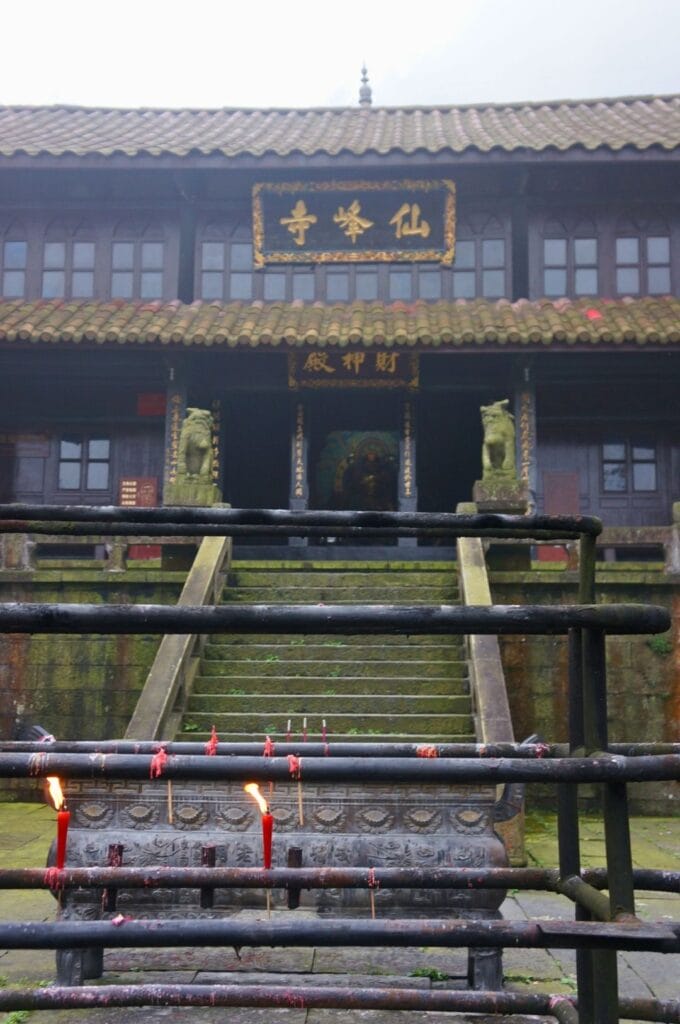
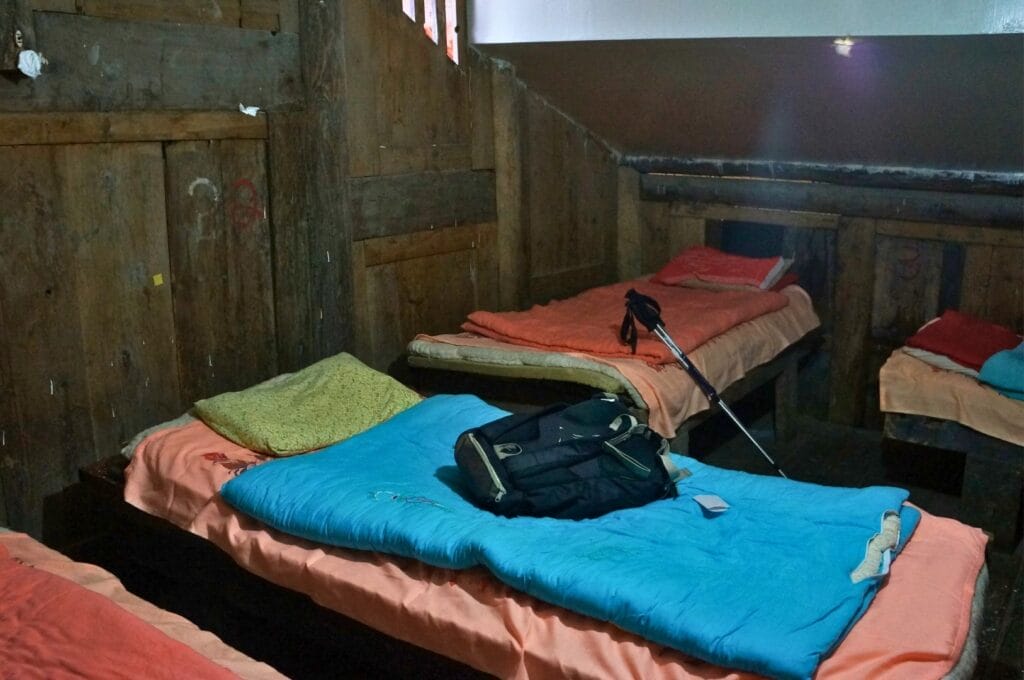
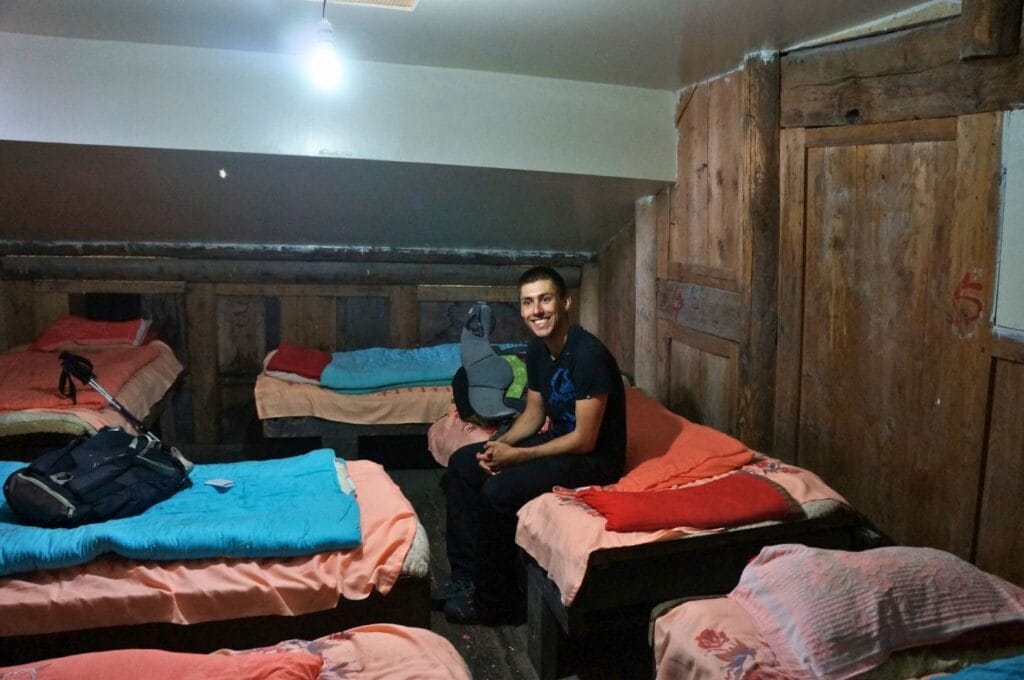
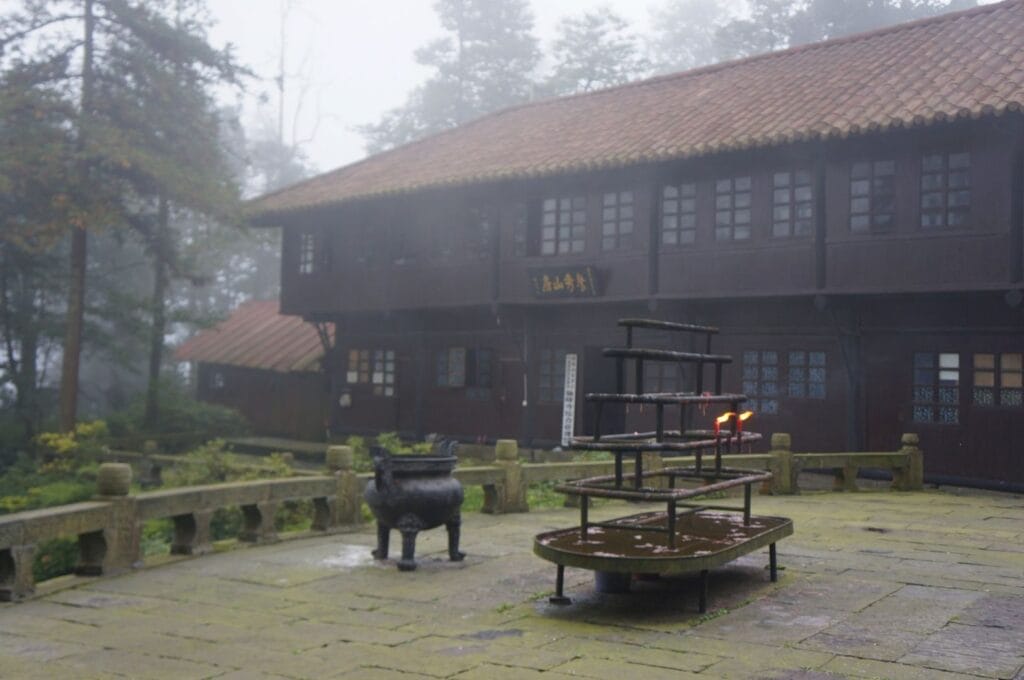
Note: we didn’t reserve our night and honestly, given the few people who pass through the steps and the size of some accommodations, you should be spoiled for choice on the way. If the challenge doesn’t scare you, you can also carry your camping equipment to camp on Mount Emei ;). Wild camping is prohibited, but you can pitch your tent around temples and monasteries.
The monkeys of Mount Emei
Near Qingyin pavilion, at the foot of the mountain, there’s an ecological monkey zone. It’s located right at the intersection of the left and right hiking trails. This zone is unfortunately a mandatory passage and it’s a deplorable circus… Being located near a bus stop, tons of tourists gather there to see the monkeys and give them food… The monkeys are really used to human presence and jump on tourists to steal whatever they can get their hands on. Keep everything well inside your backpack (glasses, phone, camera, food…).
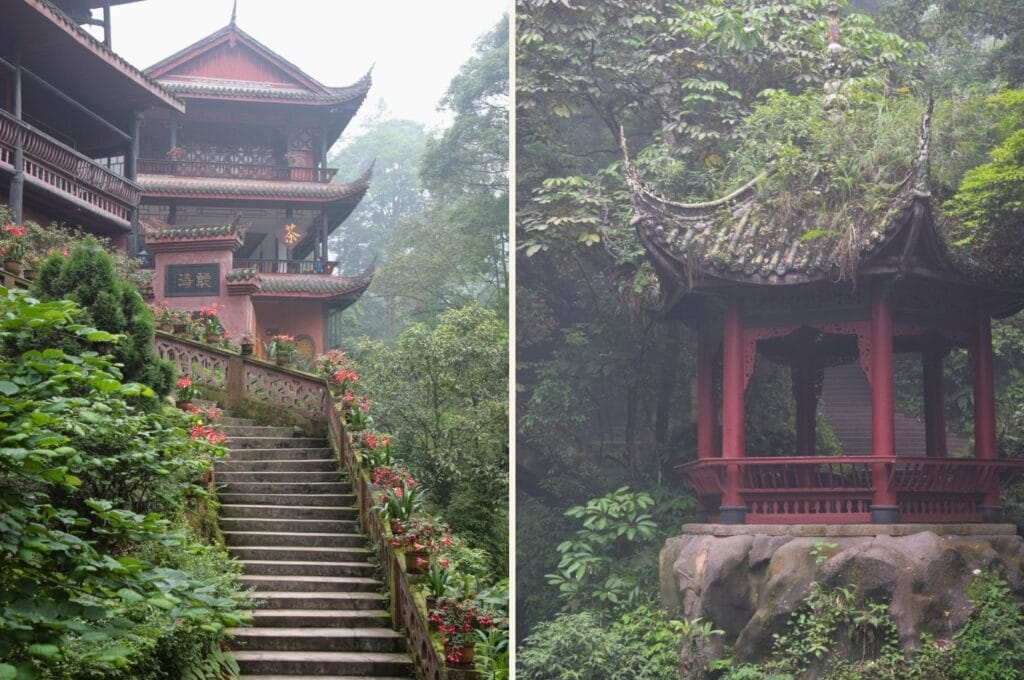
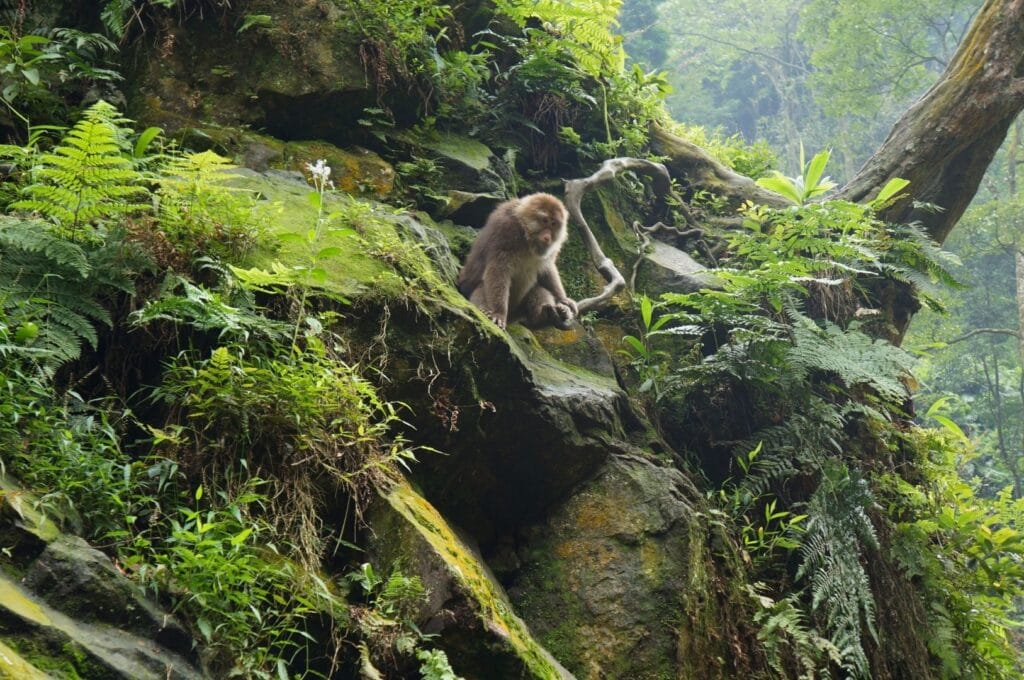
Some photographers try to take shots when monkeys have jumped on you to resell you the photos afterwards… In short, if you can, cross this zone as quickly as possible because afterwards, you’ll be able to observe the monkeys peacefully, in their natural environment and without the tourists ;).
Note: if the monkeys show a bit of aggression, push them away with your hiking stick or a piece of bamboo you’ll find on the trail. Another trick: keep a paper with you and if monkeys bother you, throw it in the trash; they’ll rush to rummage looking for something to steal or eat and will then leave you alone.
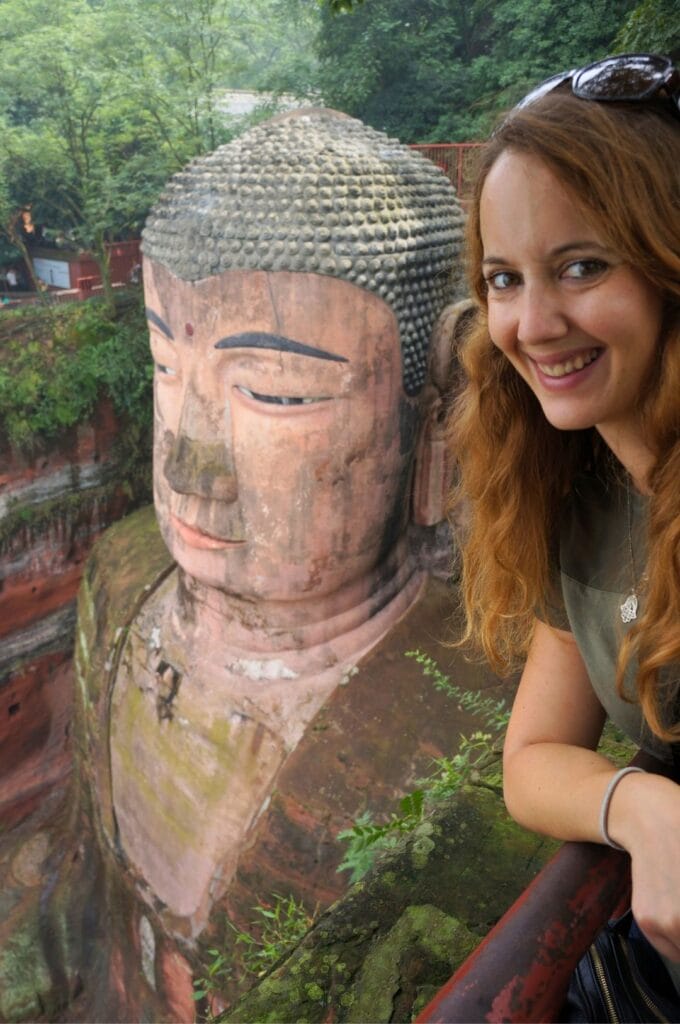
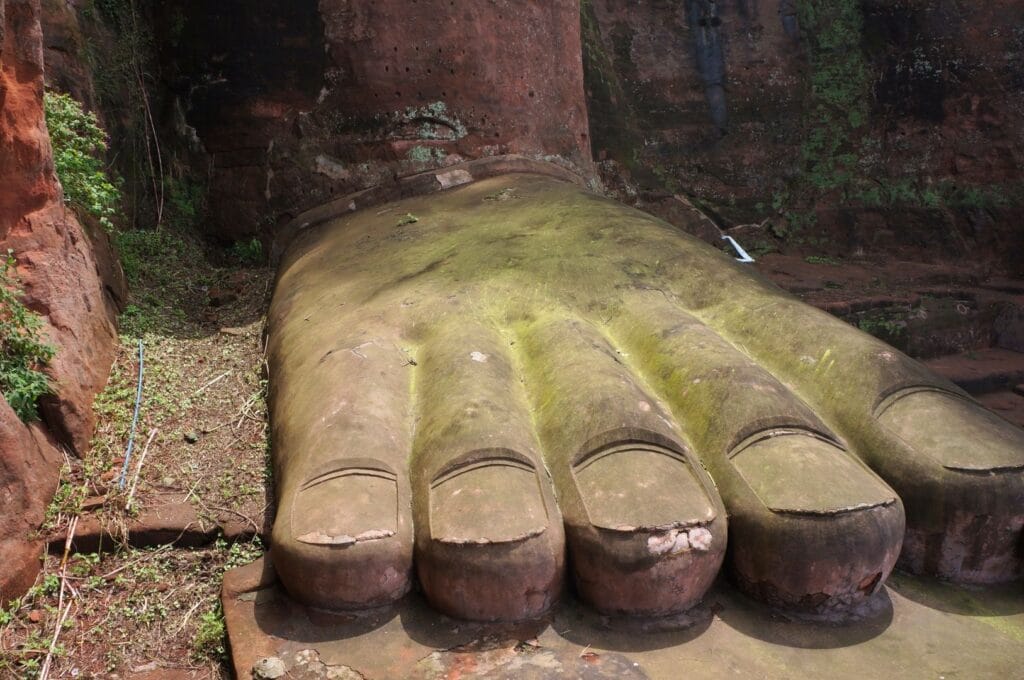
Other activities to do around Emeishan
See the Giant Buddha at Leshan
If you’re coming from Beijing and miss the crowds, then definitely don’t miss the opportunity to go see the giant Buddha of Leshan! On our side, we preferred to visit the world’s largest Buddha directly after climbing Mount Emei. We must be really masochistic, given that there are still more steps! After spending 2 days going up and down stairs on a sacred mountain, what could be better, frankly, than doing a few more steps to reach the Buddha’s feet? At least it had the merit of finishing off my glutes for good!
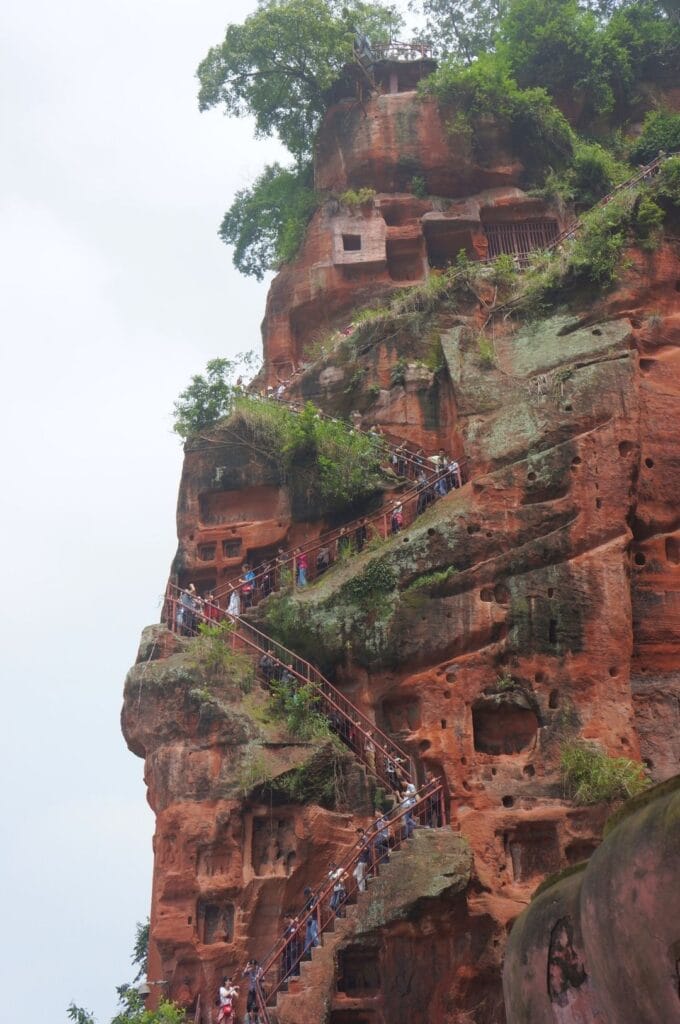
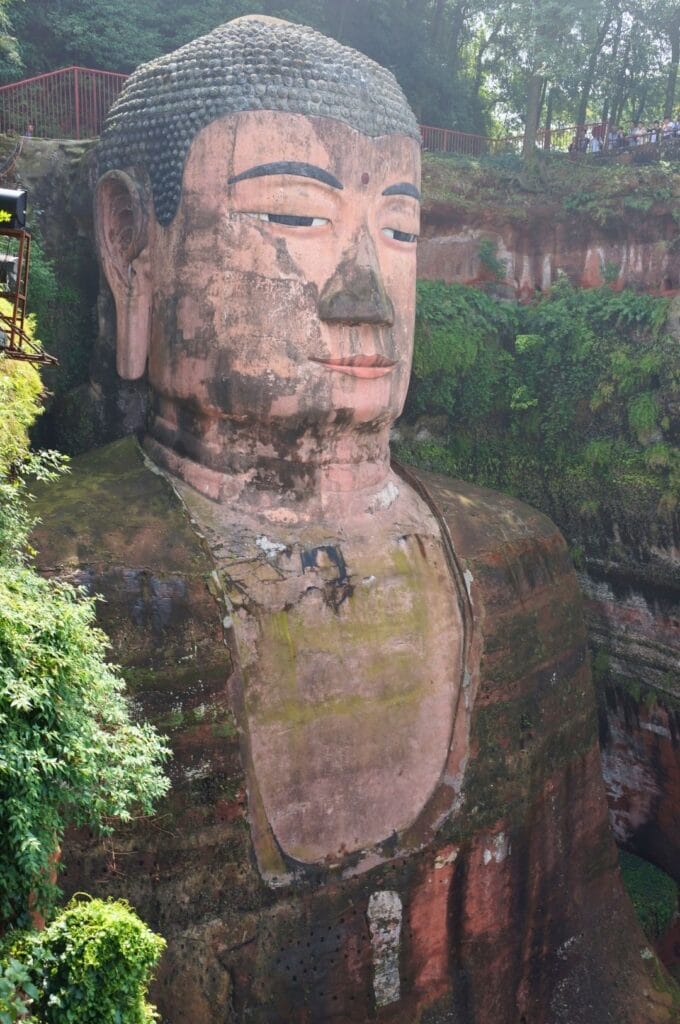
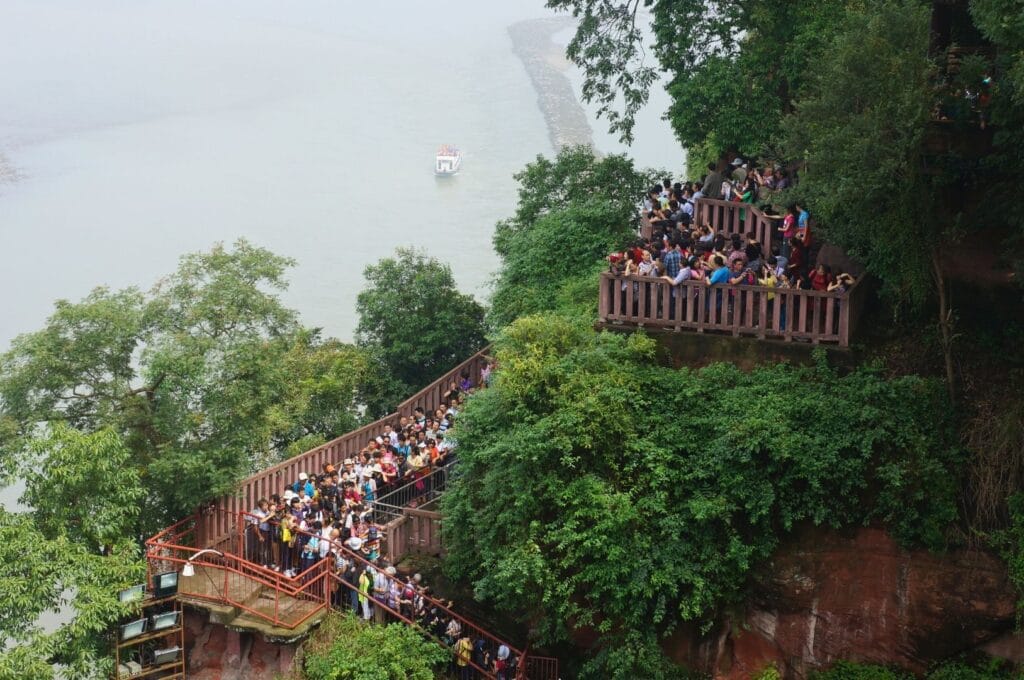
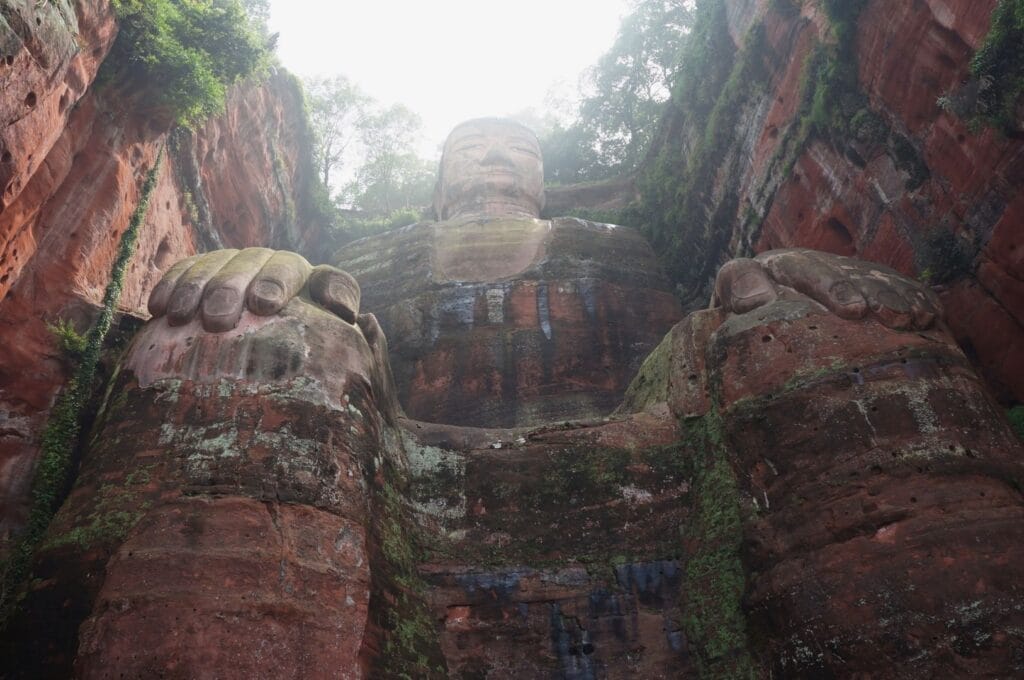
More seriously, this great Buddha may be totally overrun by crowds, but it remains a must-see! Just try to imagine a Buddha over 70 meters high, carved directly into the rock, dating from the 8th century! It really amazed us! To give you a more concrete idea of the dimension, imagine that just one ear alone already measures 7 meters!
In any case, to go to Leshan from Emeishan, the train is perfect! The journey takes just 15 minutes and the ticket price is 64 yuan per person. To view schedules and purchase tickets, visit this website.
Finally, entry is paid… Expect to pay 80 yuan per person to access the site, to which you must add 70 yuan if you want to take a little boat trip on the Min Jiang river and have a beautiful overall view. Advice: book your ticket online to get the first slot and thus avoid crowds.
Visit Chengdu and its Panda Reserve
If you haven’t been to Chengdu yet, we can only recommend taking a tour. It’s only 160 km from Emeishan. To tell you everything, we literally fell in love with the capital of Sichuan! The giant panda center and People’s Park are 2 must-sees of the city.
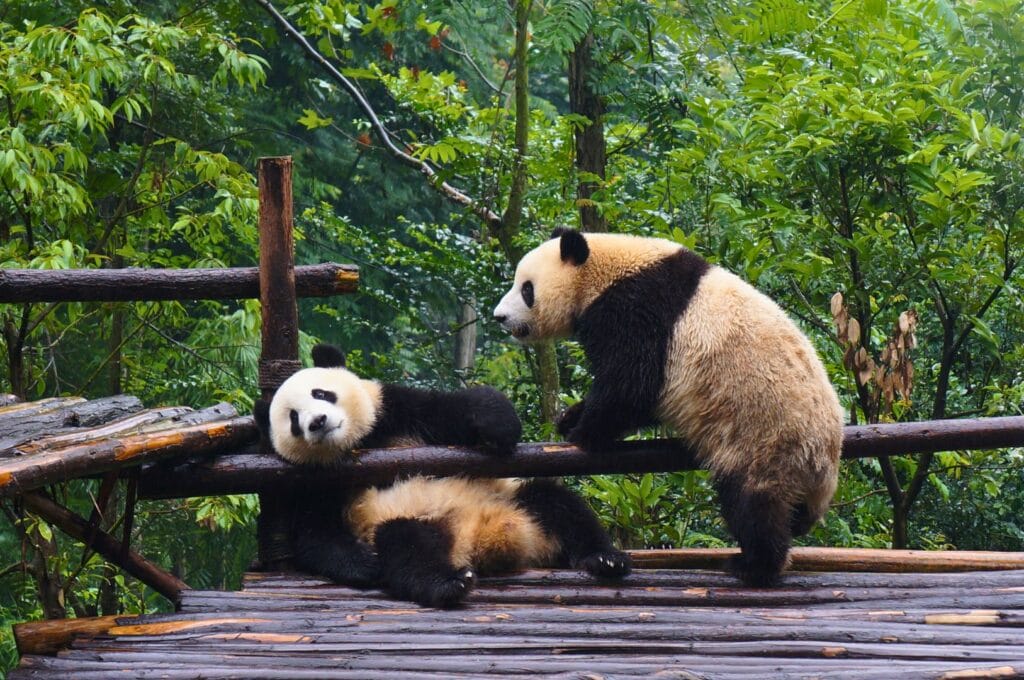
The People’s Republic of China, like many other countries in the world, requires a visa to enter the territory. To obtain this precious document, you need to prove several things: accommodation reservations, exit tickets from the country, etc. One of the essential points for obtaining the visa is also having travel insurance. If you don’t have one yet, feel free to check out our selection of the best travel insurance.
Our review of hiking Mount Emei
To summarize, Mount Emei really lets itself be discovered through sweat and effort for those who aren’t afraid of steps ;). The left flank trail is full of wonders and it would be a shame to miss it even if good physical condition is recommended. However, if your budget isn’t limited and you’re outside tourist periods, you can probably reach the summit more easily and appreciate the view peacefully (more or less). But frankly, would the pleasure be the same without the muscle soreness? Not sure… In any case, our glutes remembered this sacred mountain for quite a while!
For what’s next, we’re taking you to another corner of Sichuan, direction Kangding for an incredible trek. Then, we change provinces to go to Yunnan to hike in the Tiger Leaping Gorge!
P.S.: We’ve prepared a complete guide to prepare your backpacking trip to China (tips, itinerary, transport…).
Pin it
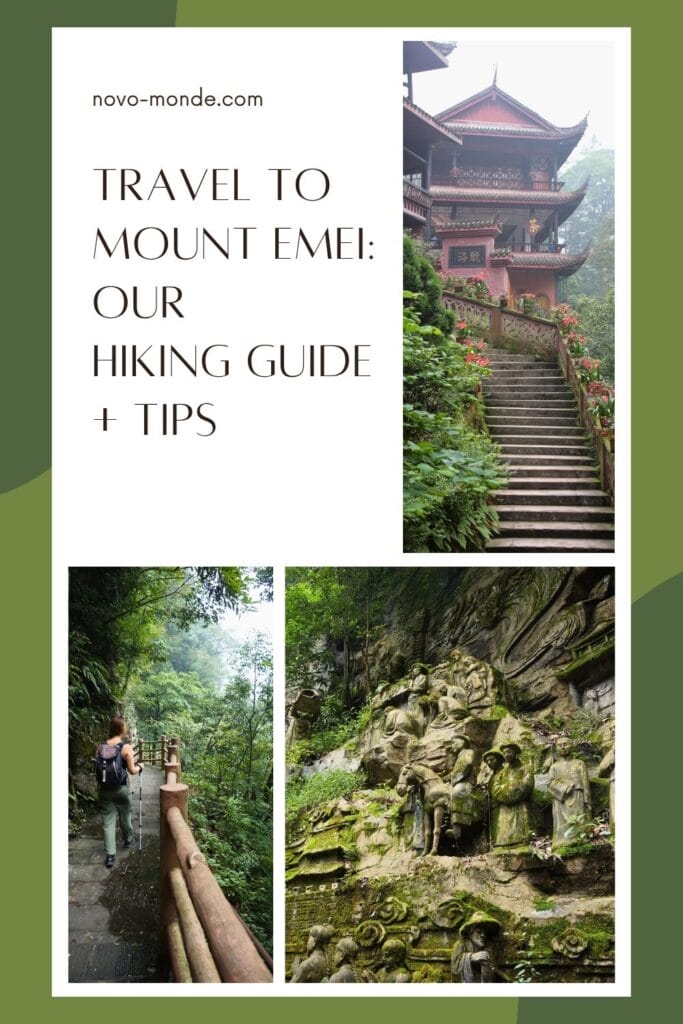
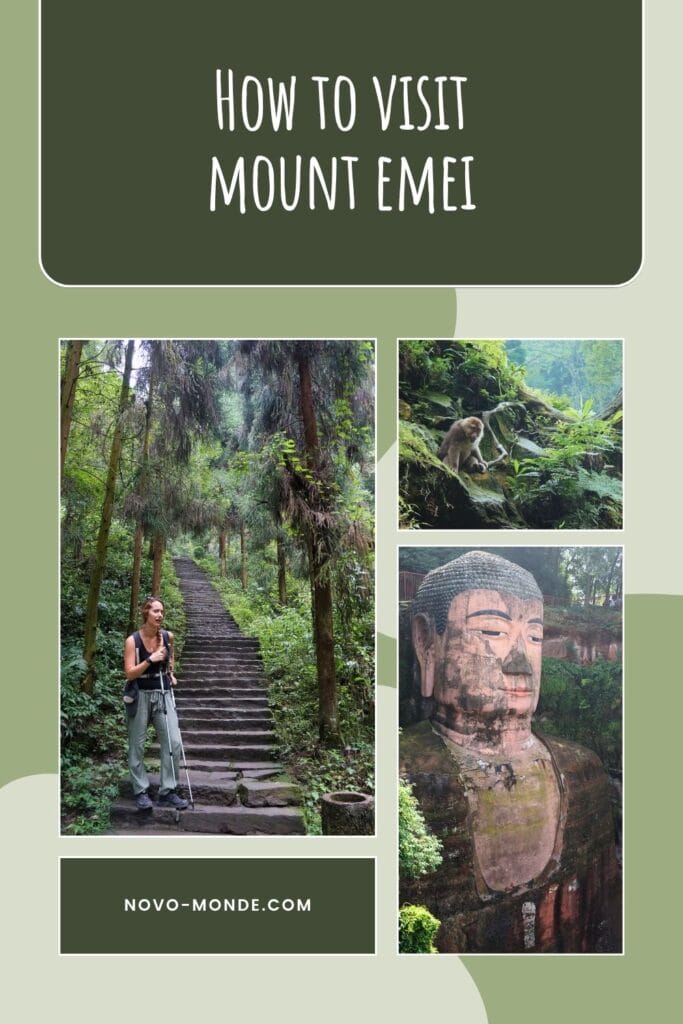
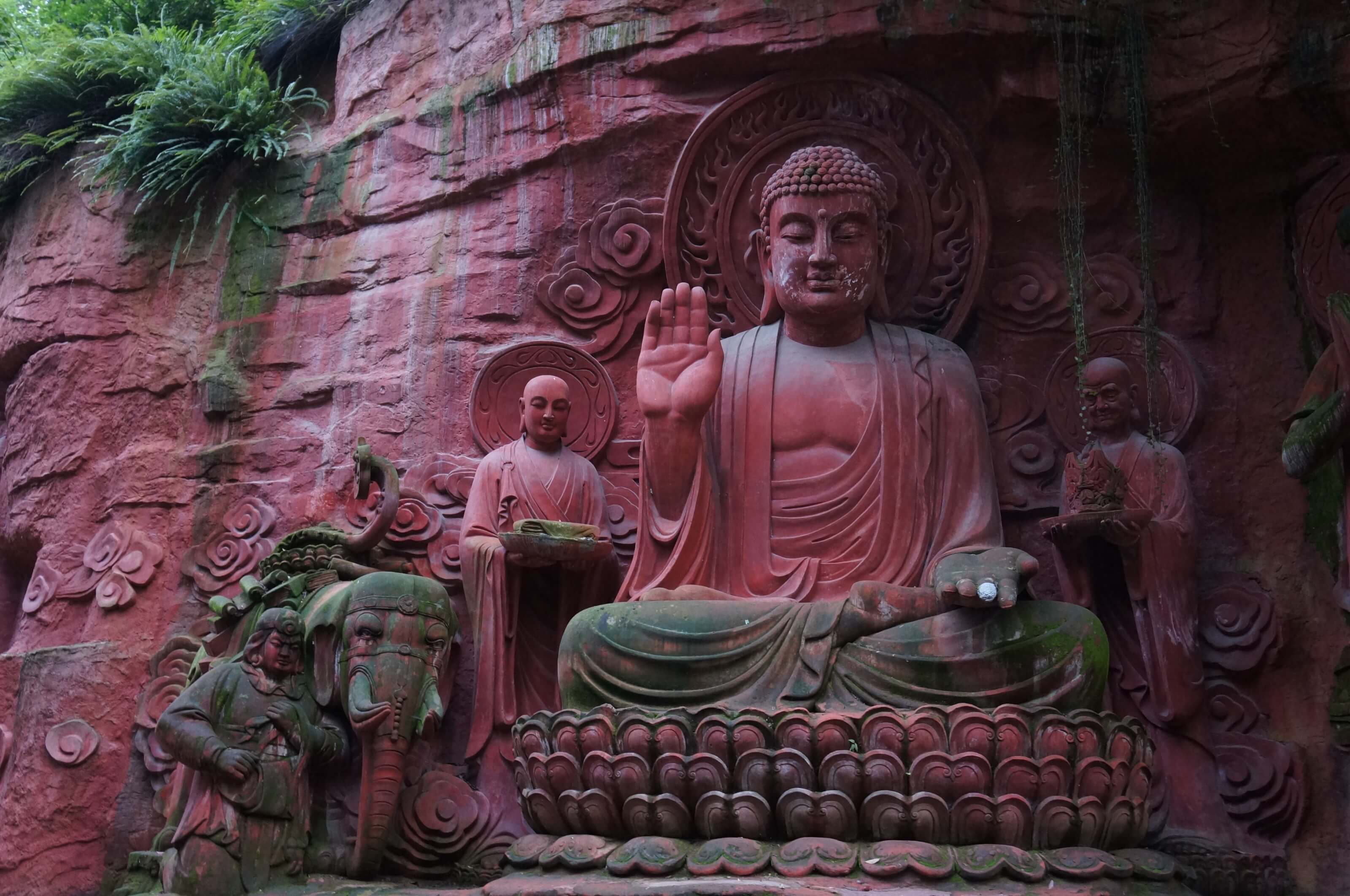
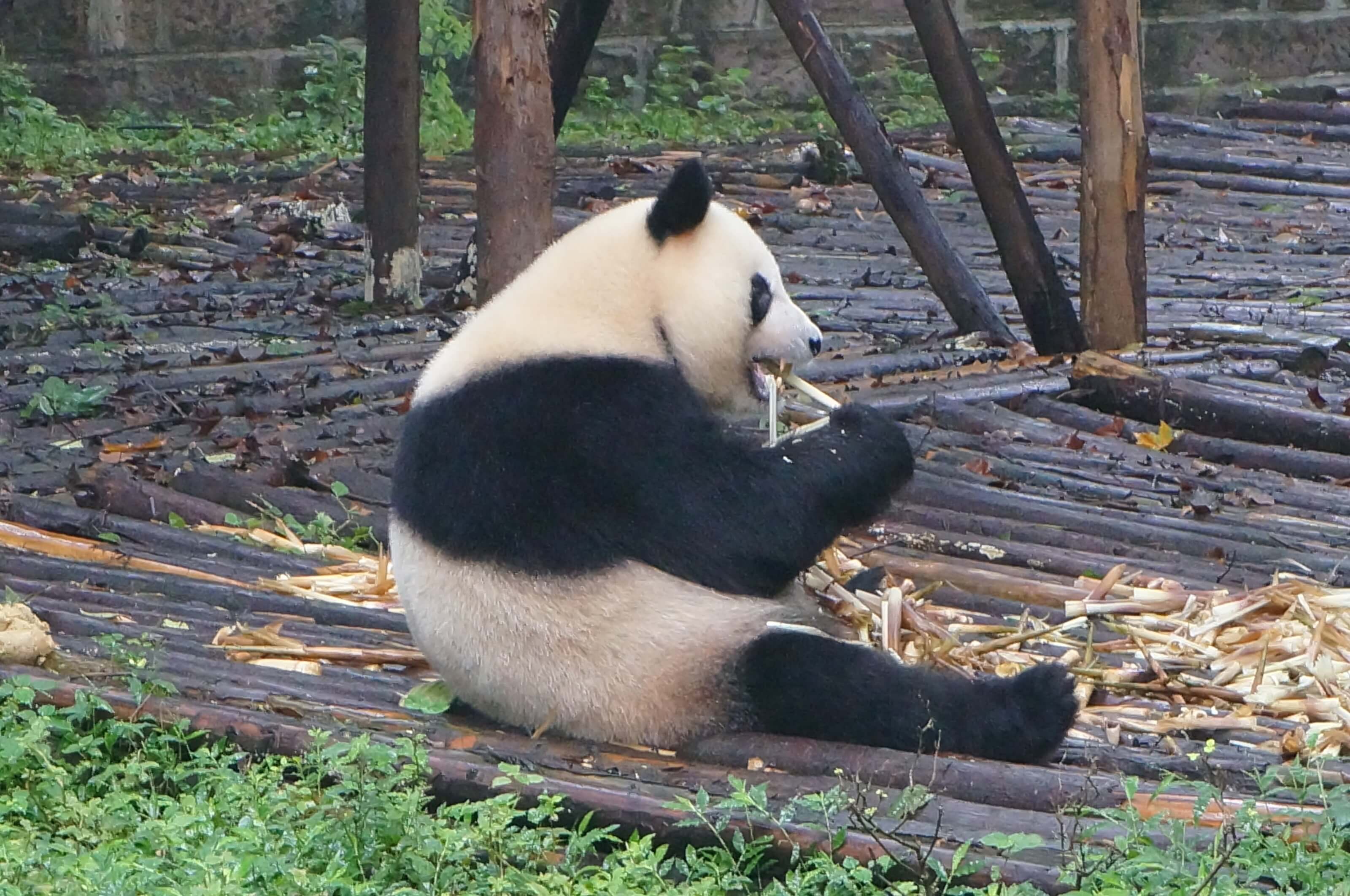
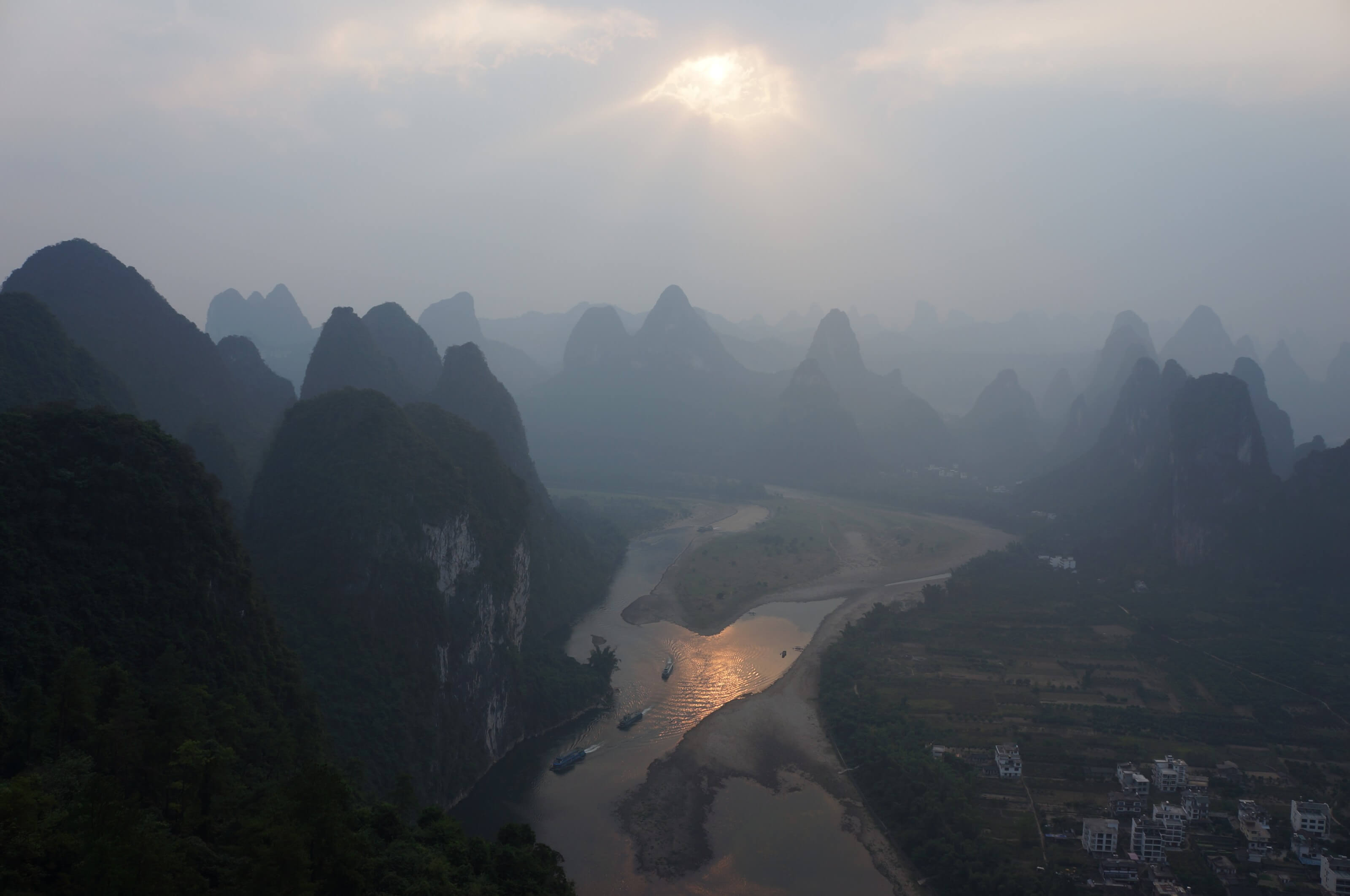
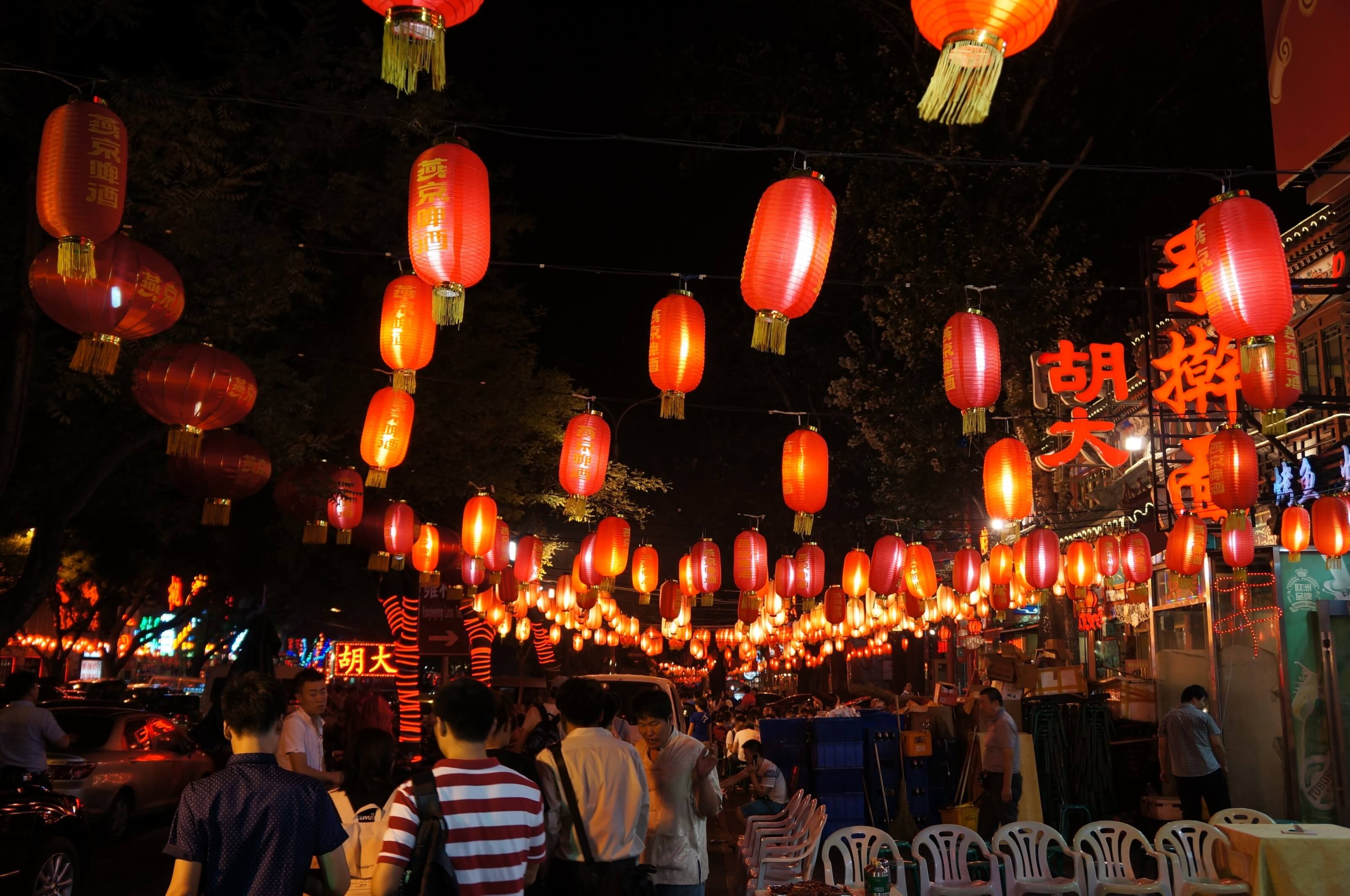
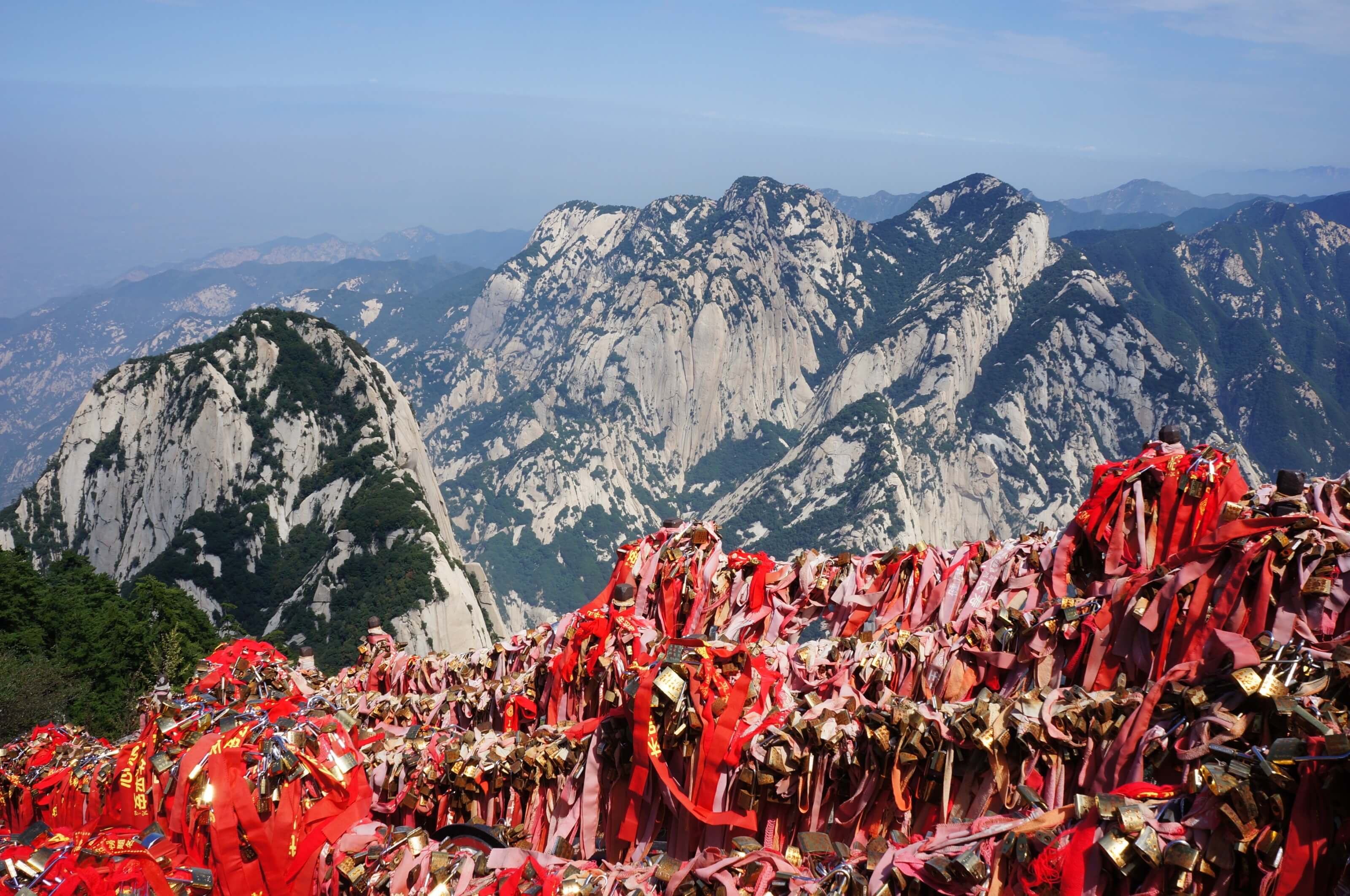
As a Sichuanese born in Emei, I couldn’t believe that my hometown can be recognized and toured by foreigners…on foot! As an attraction with dense virgin forests, diverse native life and spectacular snow scenery (in winter), it is abnormally ignored by most tourists. Even Chinese tourists visiting Emei would choose to travel by cable car because it’s more instant! Thank you a lot for admiring this wonderful place!
Hi Zoe,
Thanks for your comment 🙂 . Well we love hiking and we would never choose the cable car over a good hike to discover a mountain 😉 . Actually it was quite a memorable experience! I can still remember our night in the Xianfeng temple and the beautiful forest all around!
Merci beaucoup for your post! I walked **down** Emei Shan on the day of the total solar eclipse on 22 July 2009 from the bus parking lot. It took two days, and I made it to the Xianfeng temple to spend the night just as it was getting dark.
Walking down the mountain is perfectly respectable because there are plenty of ascents mixed in with the descents. Now I’m writing my own little essay about this adventure. I greatly appreciate finding your map and information, which will help me fill in details I had forgotten or perhaps never knew.
Thanks for the blog! I’m going to hike up Emei next week alone and the monkeys have been my main worry. It’s reassuring to know the monkeys outside of tourist zones are pretty chill. 🙂
Taking Xianfeng Temple as an example, after asking, we learned that all materials in the middle area are transported by manpower. It takes 4 hours to go up the mountain and 3 hours to go down the mountain. It is understandable why the prices of materials in the middle area are so high. If you can prepare enough materials yourself, it will be more appropriate, which can reduce waste emissions and save expenses.
Hello! Thank you for all of the information regarding the hike up Emeishan. We are planning to hike the mountain this summer, and are confused about how to reserve a one-night stay in the temples along the way. Did you simply arrive and request a room, or did you reserve a space in advance? Thank you so much for your detailed information about this cool trip!
Hi,
yes, we just arrived on the spot and got a room. I’ll be honest, I would not know how to book those neither 😉 I found a phone number online ( +86 833 5484101) for the Xianfeng temple but not sure they would speak english (it could be tested).
Enjoy your trip!